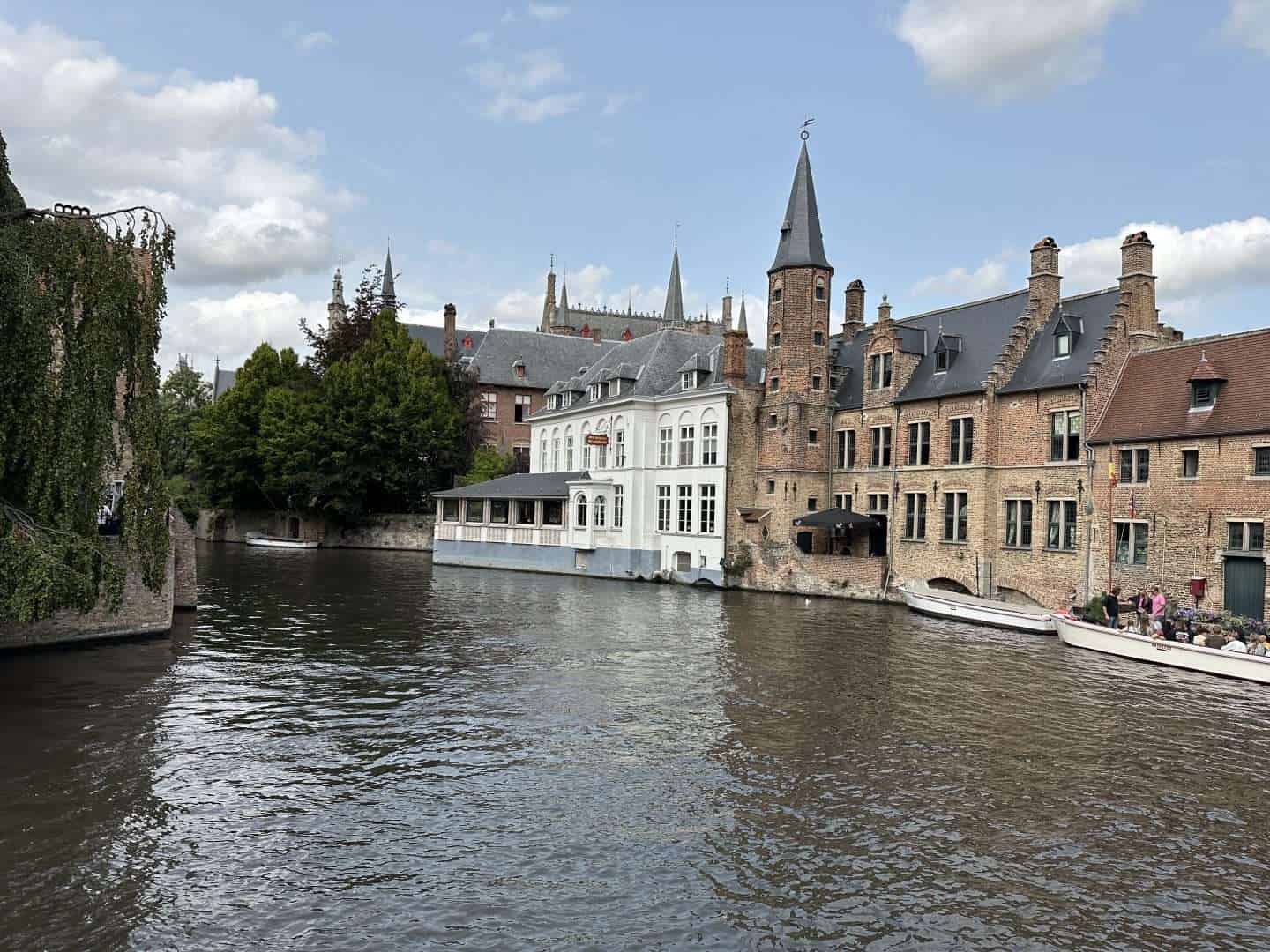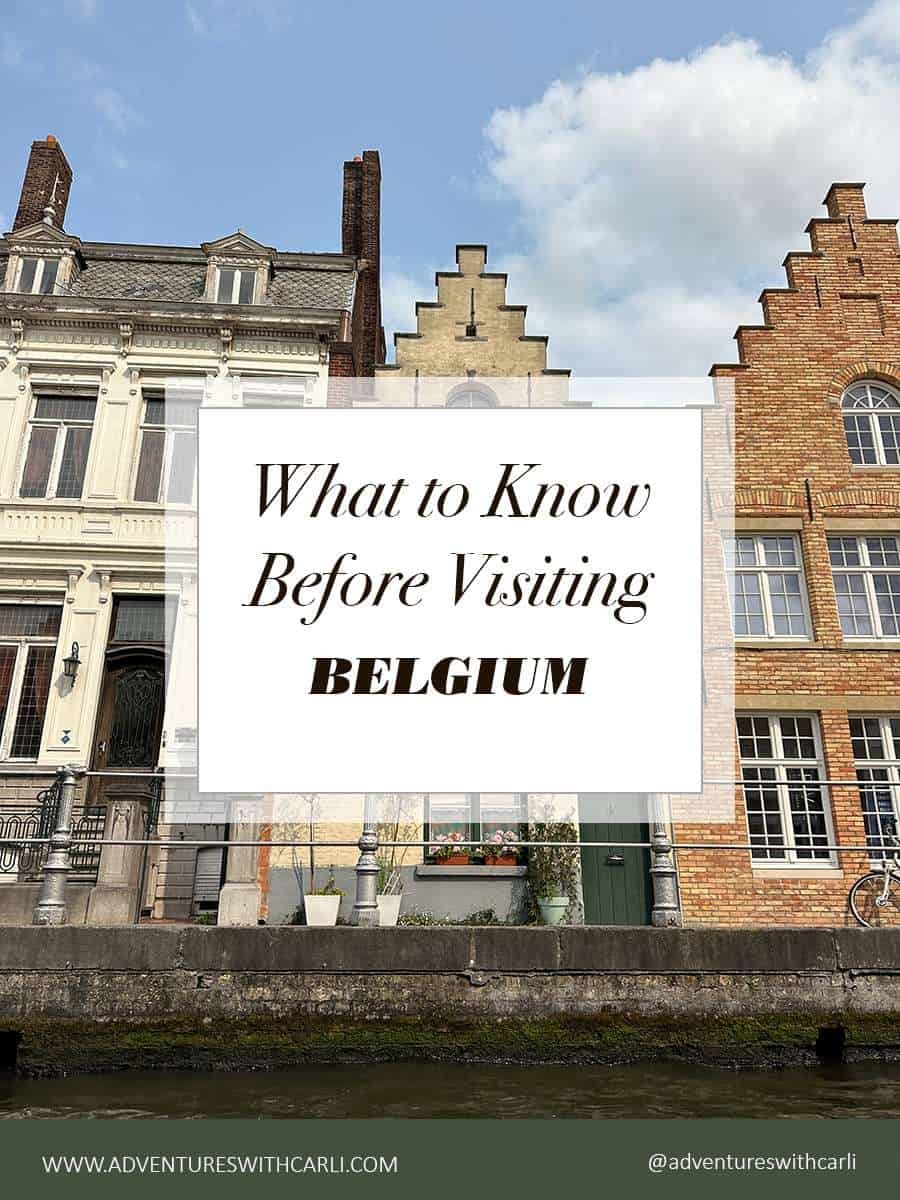Often referred to as the Amsterdam of Belgium, Bruges is a truly beautiful medieval city built upon canals. If you only have one day in Bruges, this post shares the highlights.
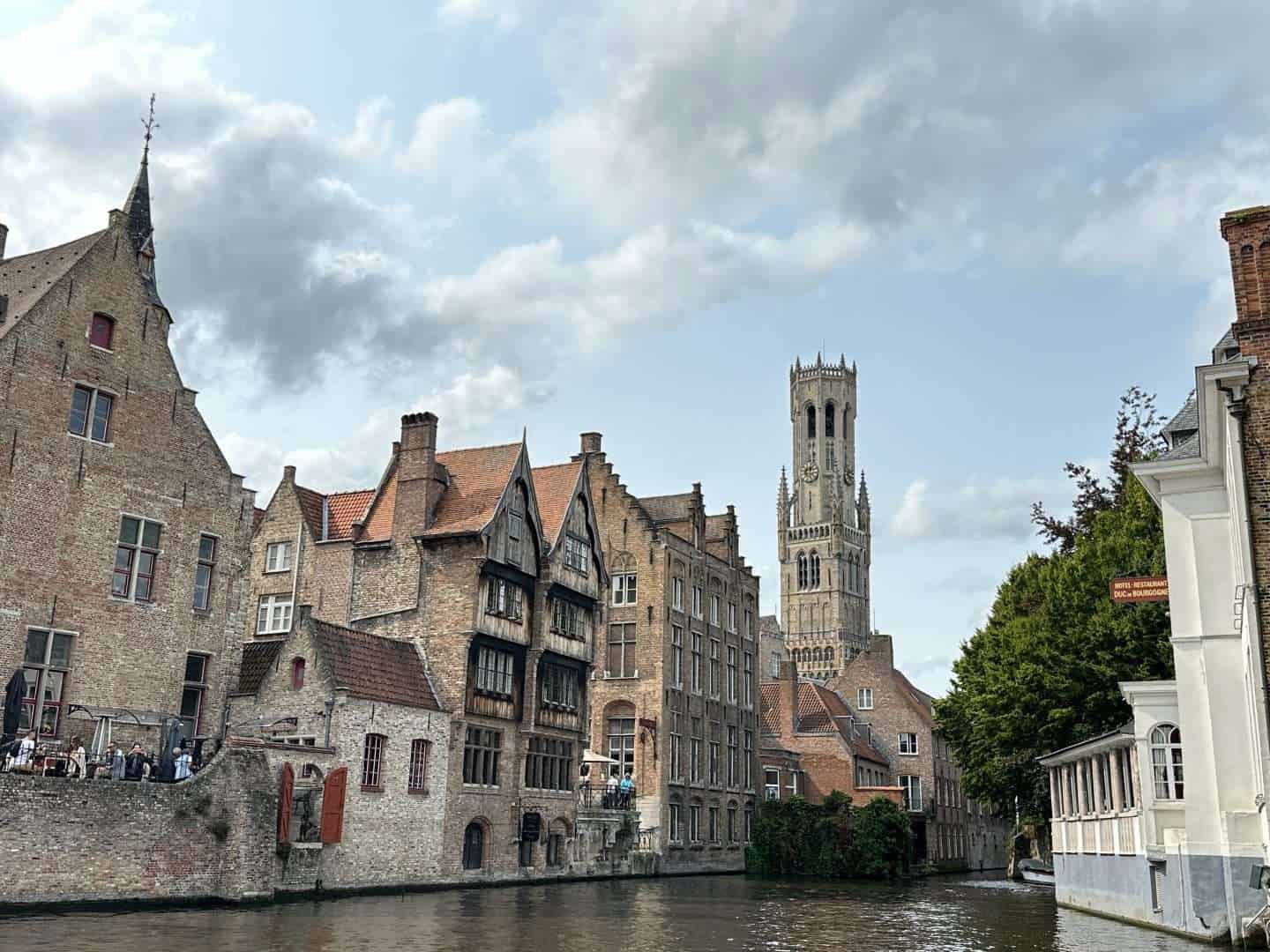
Some of the links in this post contain affiliate links. What does that mean you ask? I may earn a small commission, but you won’t pay any extra. These links also help fund and support my page.
If you would like more information on visiting Belgium, read What to Know Before Visiting Historic Belgium
Why spend one day in Bruges?
Between the 12th and 15th centuries, Bruges was a hub of commerce and industry not just for Belgium, but northern Europe. At that time Bruges developed into the historic city we know today.
The main attraction for visiting Bruges is the colorful gothic style architecture that you can view walking along the canals or in the public plazas. Because the brick gothic architecture is such an intrinsic part of the history and culture of Bruges, the Historic Center is a UNESCO World Heritage Site.
The city also played an active role in the early Flemish Renaissance. Since the city was an economic hub in Belgium, there were wealthy patrons to commission works by artists like Jan van Eyck and Hans Memling. You can find some of their works on display in the Groeningemuseum.
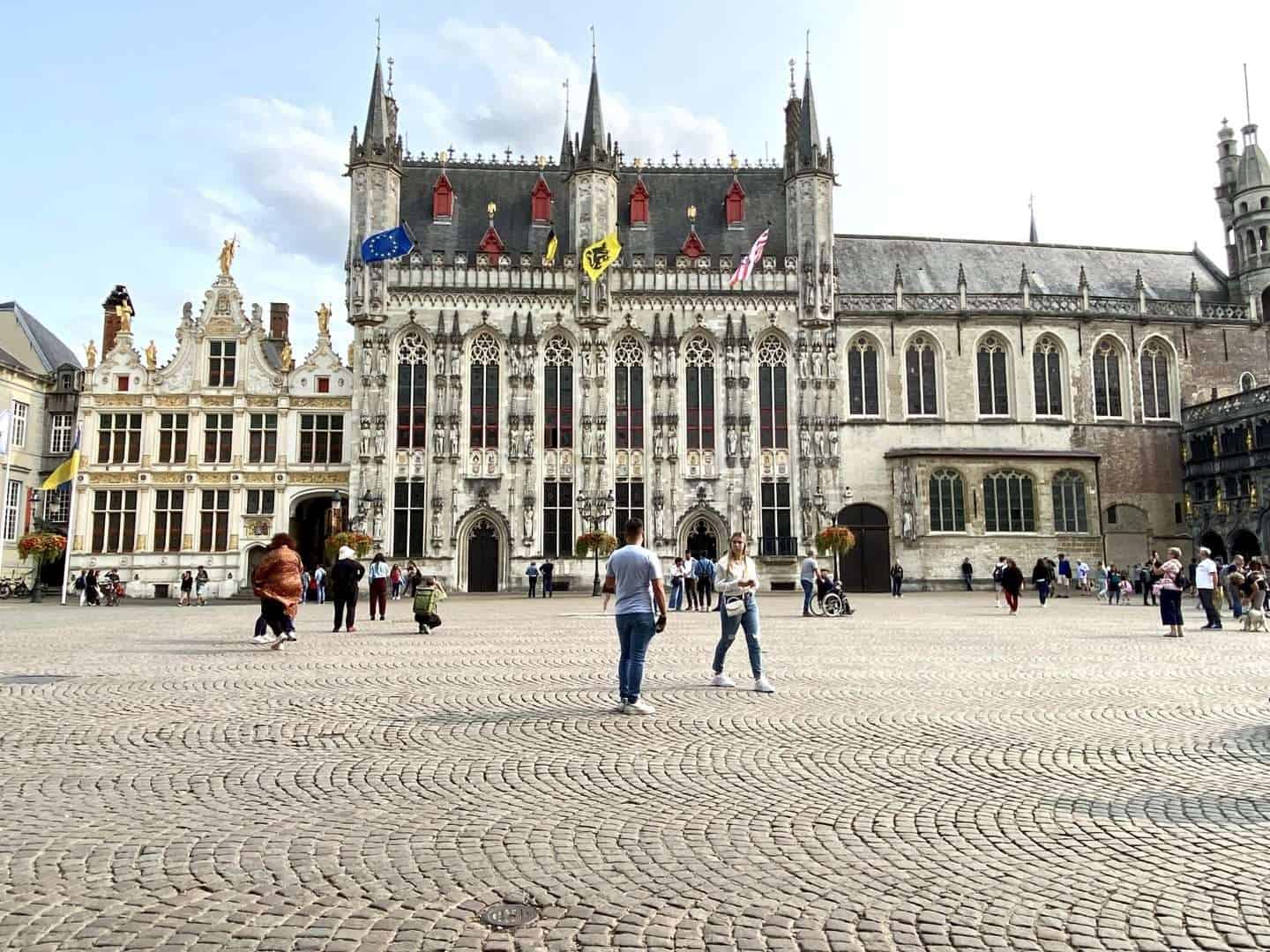
Getting to Bruges
The easiest way to get to Bruges is by train. If you are traveling from Brussels, the train is about an hour. You can purchase your ticket the same day at the train station. A round trip ticket is roughly €32. From Ghent, the train takes about 25 minutes and costs €15 round trip.
You can use apps like Omio to quickly see train times and station routes, but if you purchase tickets through the app they will cost more than at the station. I do not recommend using it to purchase tickets traveling within Belgium. Instead, you should purchase tickets directly at the train station.
You can also find route information and pricing here.
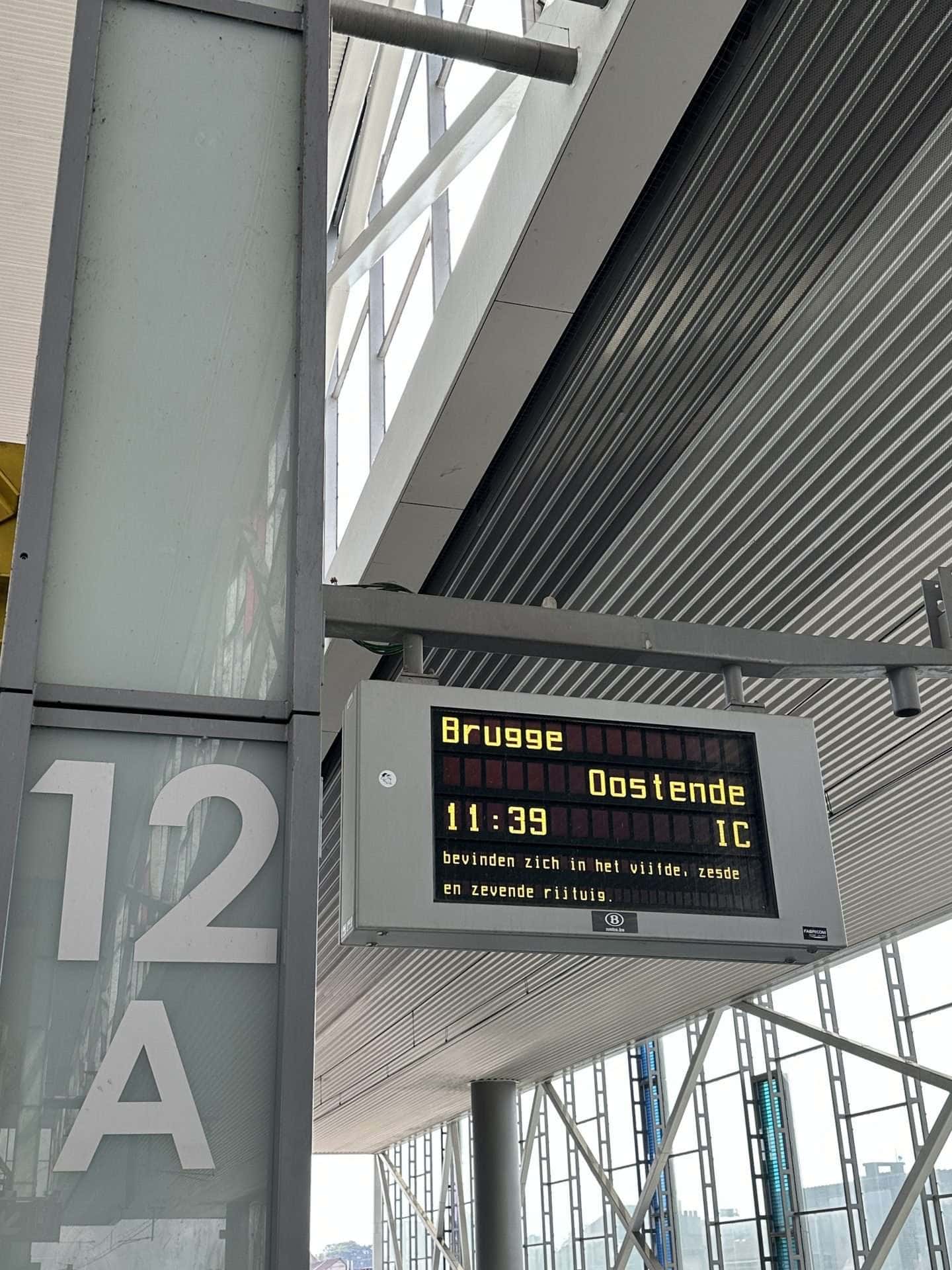
Getting around during your one day in Bruges
Once you arrive at the train station the cheapest and most efficient way to get to the city center is via bus. You will find the bus terminal directly outside the station with an office to purchase tickets. The 1 and 2 bus will take you into the city center. Bus routes and up to date time tables can be found in Google or Apple maps. Find more information on traveling by bus in Belgium.
If public transportation is not your thing, Uber is available throughout Europe and very reliable.
Once you’ve arrived at the city center, you can walk everywhere you need to go. Bruges is a flat and very walkable city.
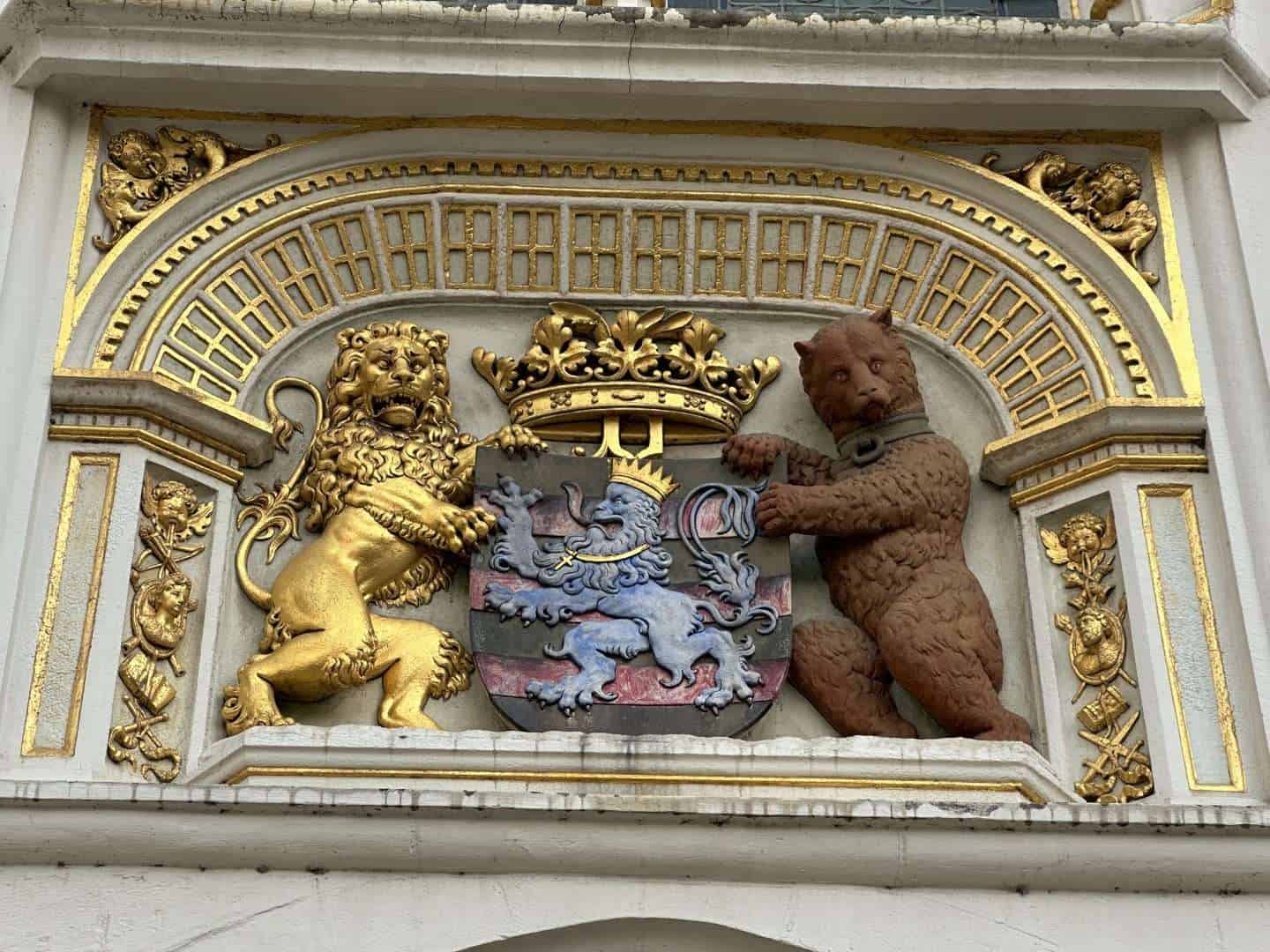
An itinerary of what to see during your one day in Bruges
One day in Bruges really is not enough to see everything but you can get a great sense of the history and culture of the town. If you only have one day in Bruges, this itinerary will show you the best places to visit in Bruges in one day.
One Day in Bruges Itinerary Map
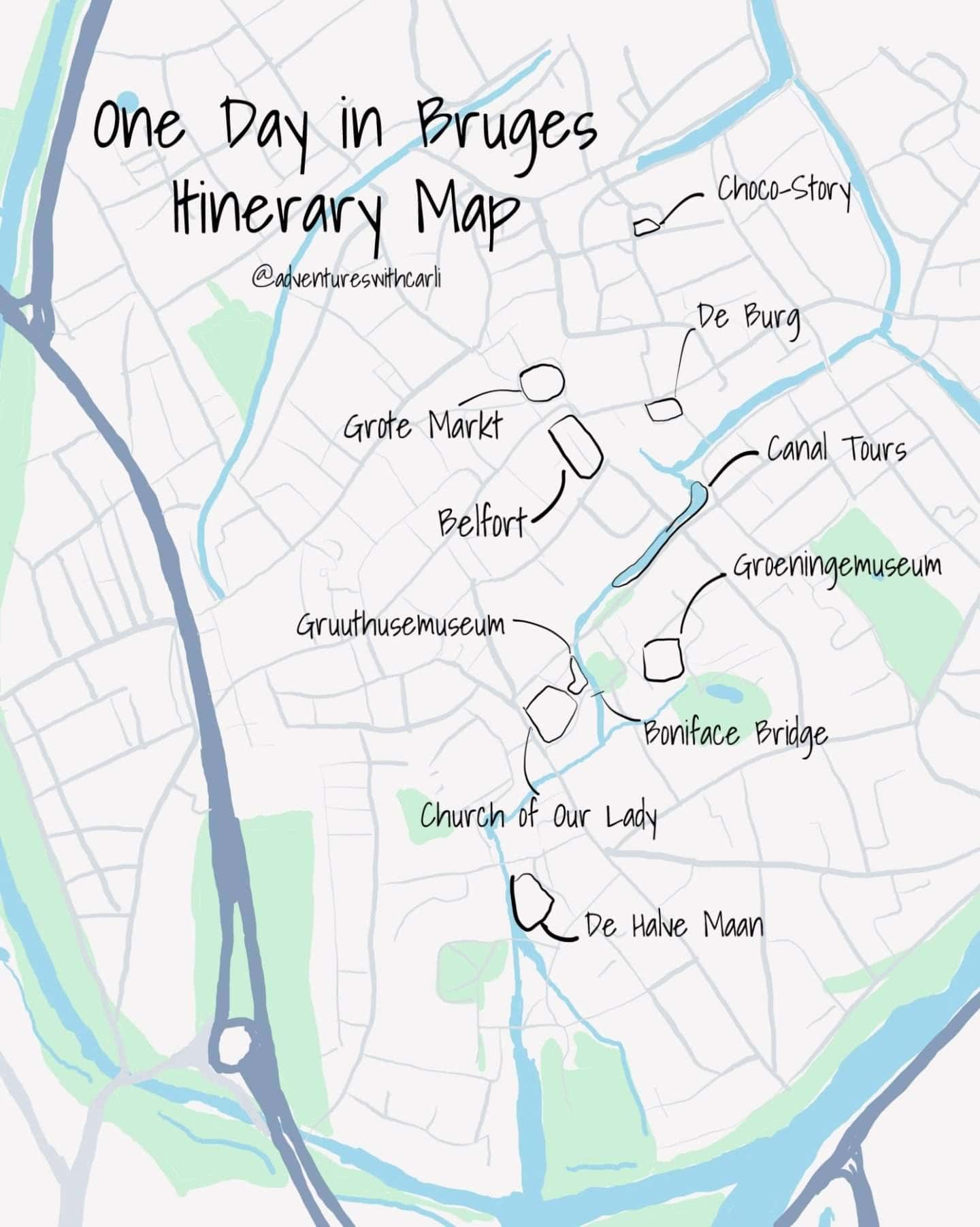
The Grote Markt
This is the most famous market square in Bruges where you will find the iconic Flanders guild houses with their angled roof and stairstep facade. Around the square there are plenty of restaurants to sit and enjoy the scenery. Beware, usually restaurants in a heavily trafficked tourist location tend to be expensive with not very good food.
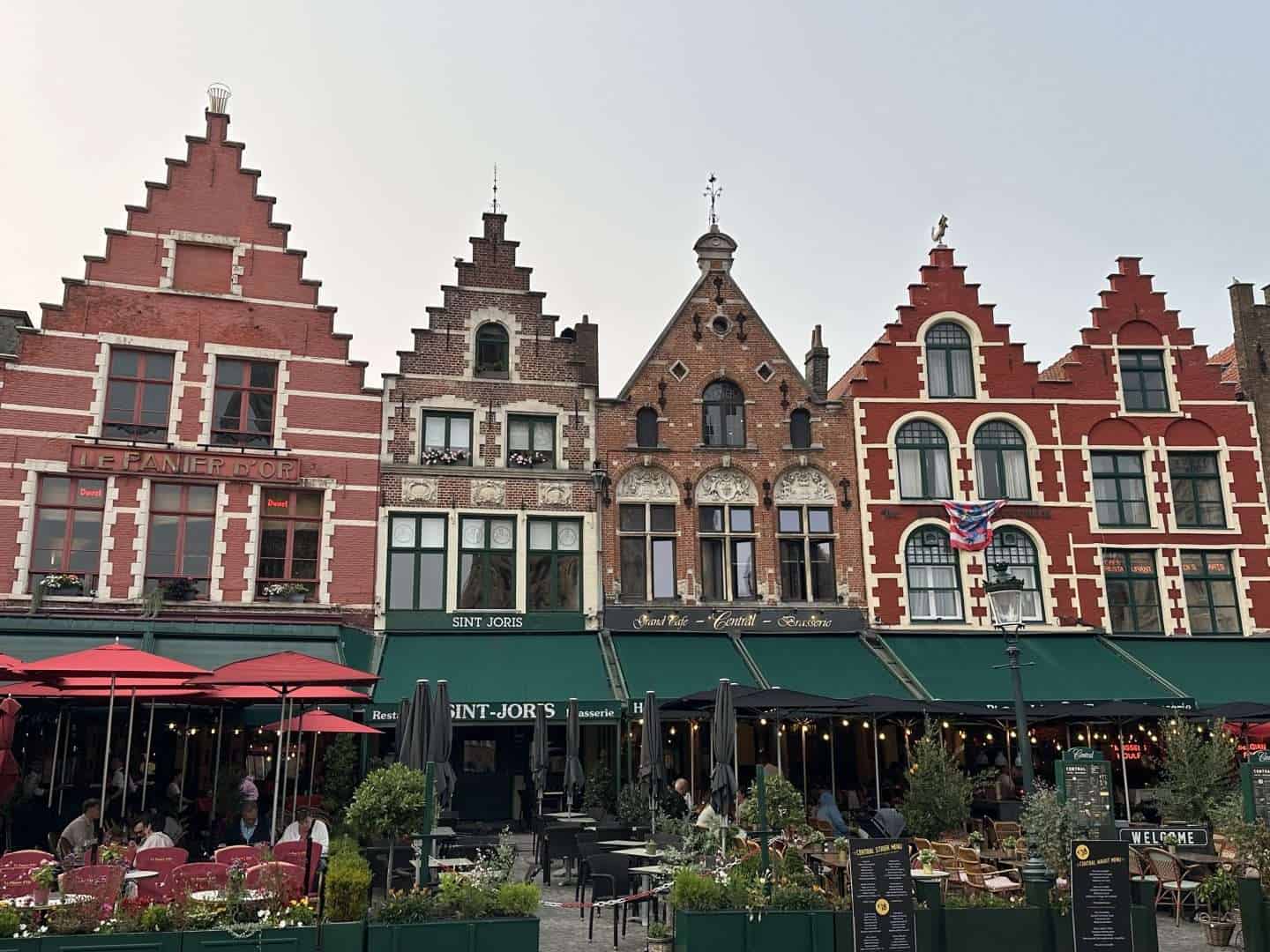
Belfort
On the opposite side of the Grote Markt from the restaurants you’ll find the Belfry of Bruges. The Befort stands as one the tallest, and most prominent buildings in Bruges. This structure was built in the 1200s and is still an active belltower. You can climb all 366 steps to get an unobstructed view of the city and the Markt below.
The belfry requires a timed reservation to climb the tower. The admission fee is € 15. If you have the Museum Pass Belgium or the Musea Brugge card the admission is free. To read more about the Museum Pass or Musea Brugge card read about the visiting museums in Belgium. The Belfry is open daily. In the summer, the belfry is open until 7pm with the last entrance at 6:45 pm.
As you climb the tower, you’ll find different landings, which not only help to catch your breath but also share the history of the tower. You’ll see both the large tower bell and the carillon that plays the specific melodies. Be careful if you are climbing the tower at the top of the hour. Seeing the mechanisms driving the bells and the carillon while they are working is fascinating, but also extremely loud. Bring earplugs just in case.

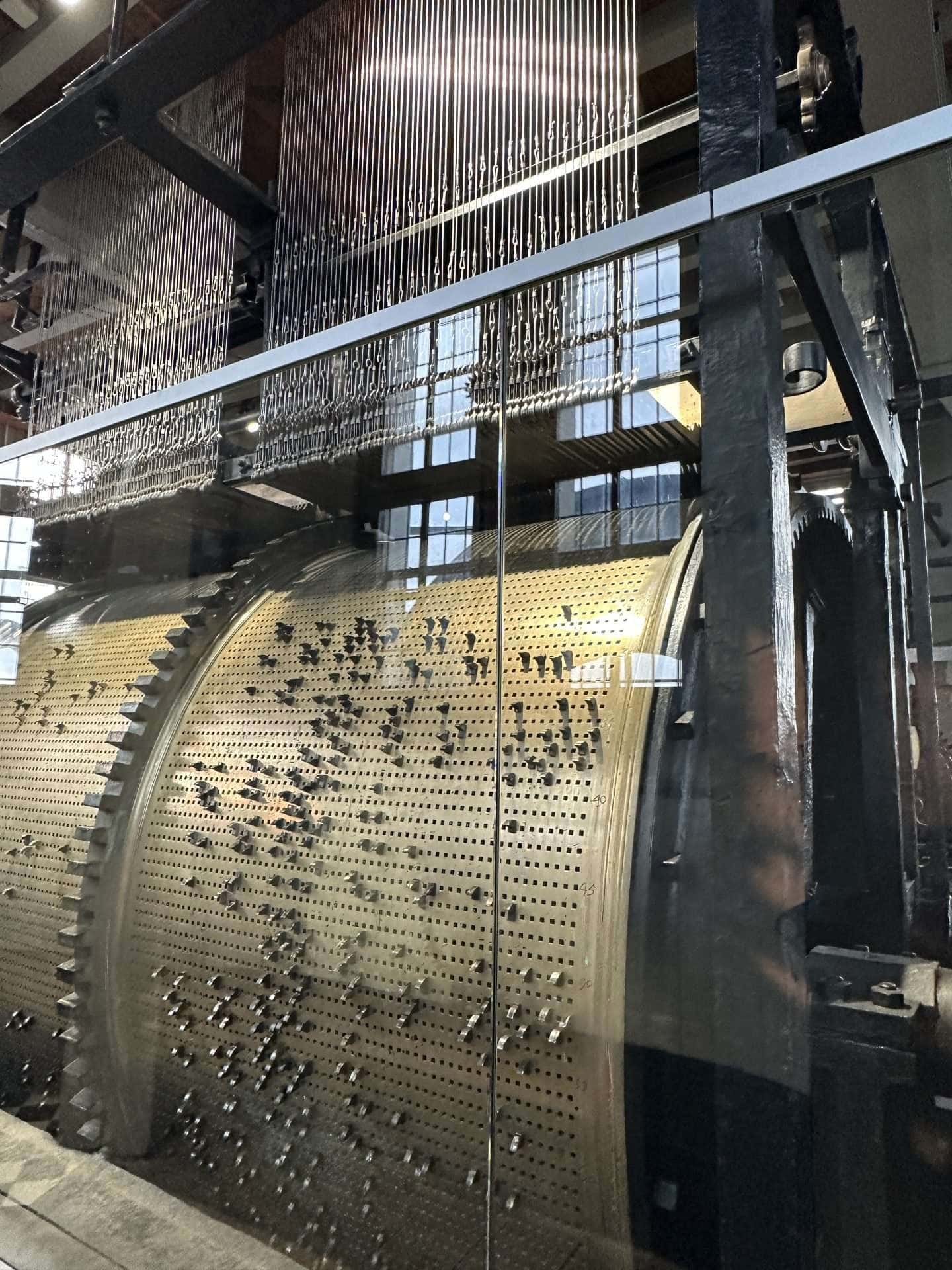
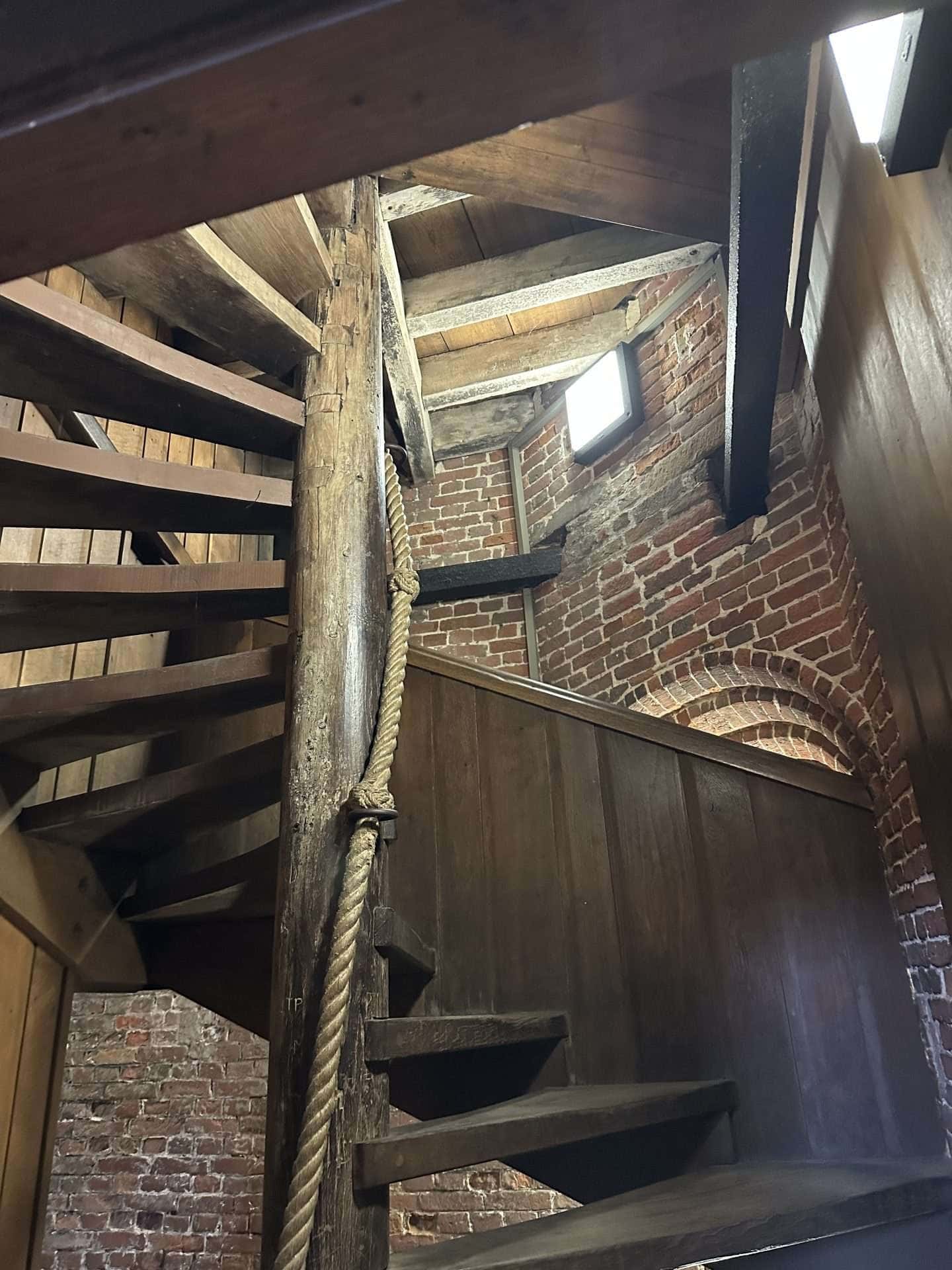
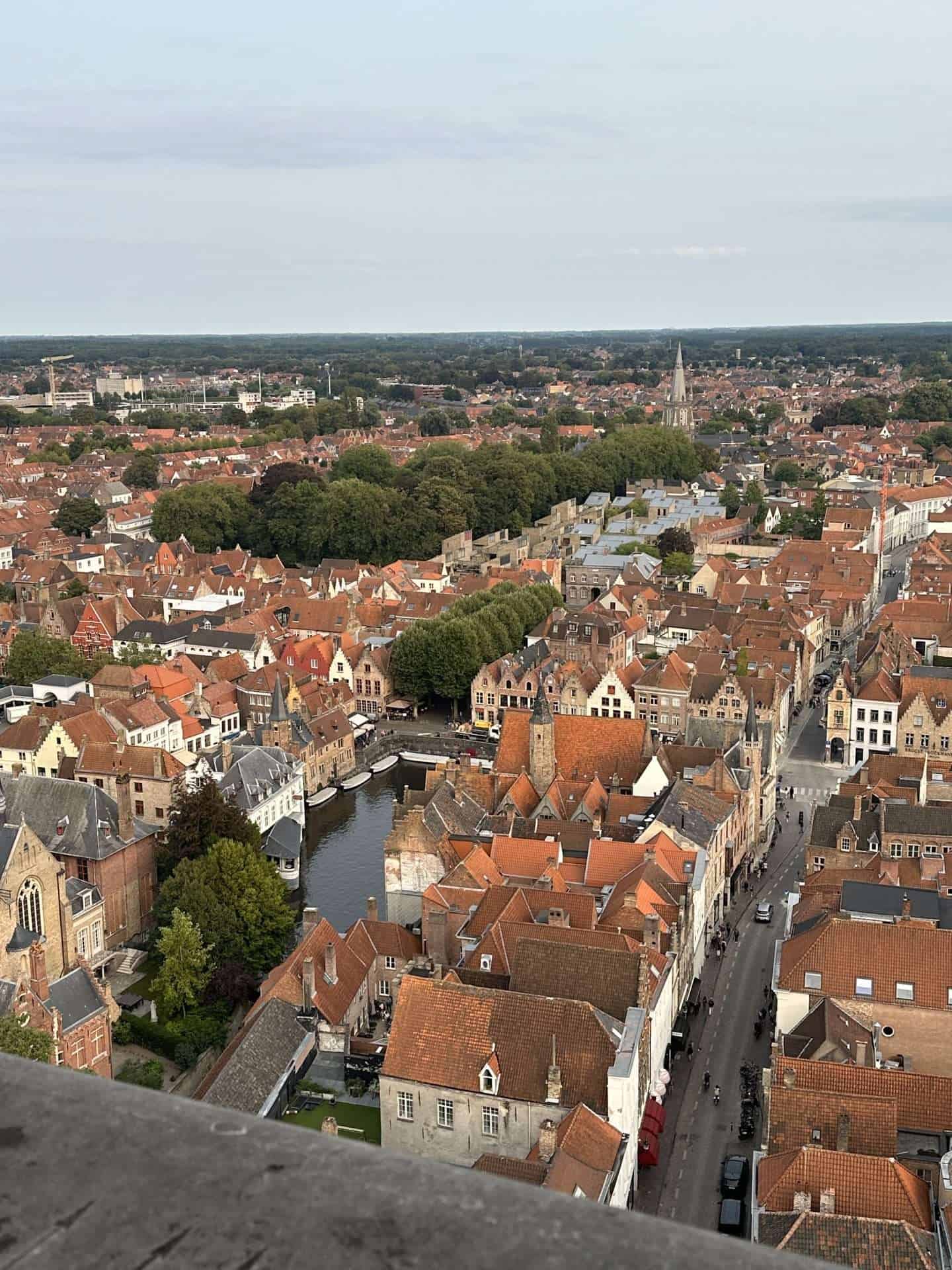
De Burg and the Basilica of the Holy Blood
From the Grote Markt, walk east one block until you enter De Burg square. This square has beautiful ornate buildings from the 13th and 14th century, including the still active city hall and the gilded Brugse Vrije (former Court of Justice of Bruges).
The most famous building in the square is the church, Basilica of the Holy Blood. While the Church of Our Lady is the most prominent structure, the Basilica of the Holy Blood is famous for being the most ornate in the city. The first floor houses a small, simple chapel, but once you ascend to the second level you’ll find the rest of the church is covered in murals, and patterned wallcovering throughout the entire space, including the beautiful stained glass windows.
When leaving De Burg, walk through a narrow passageway and cross over the Blinde-Ezelbrug bridge. This is where you will find most of the canal tours. Continue to walk south along the canal to find the most popular museums in Bruges Belgium.
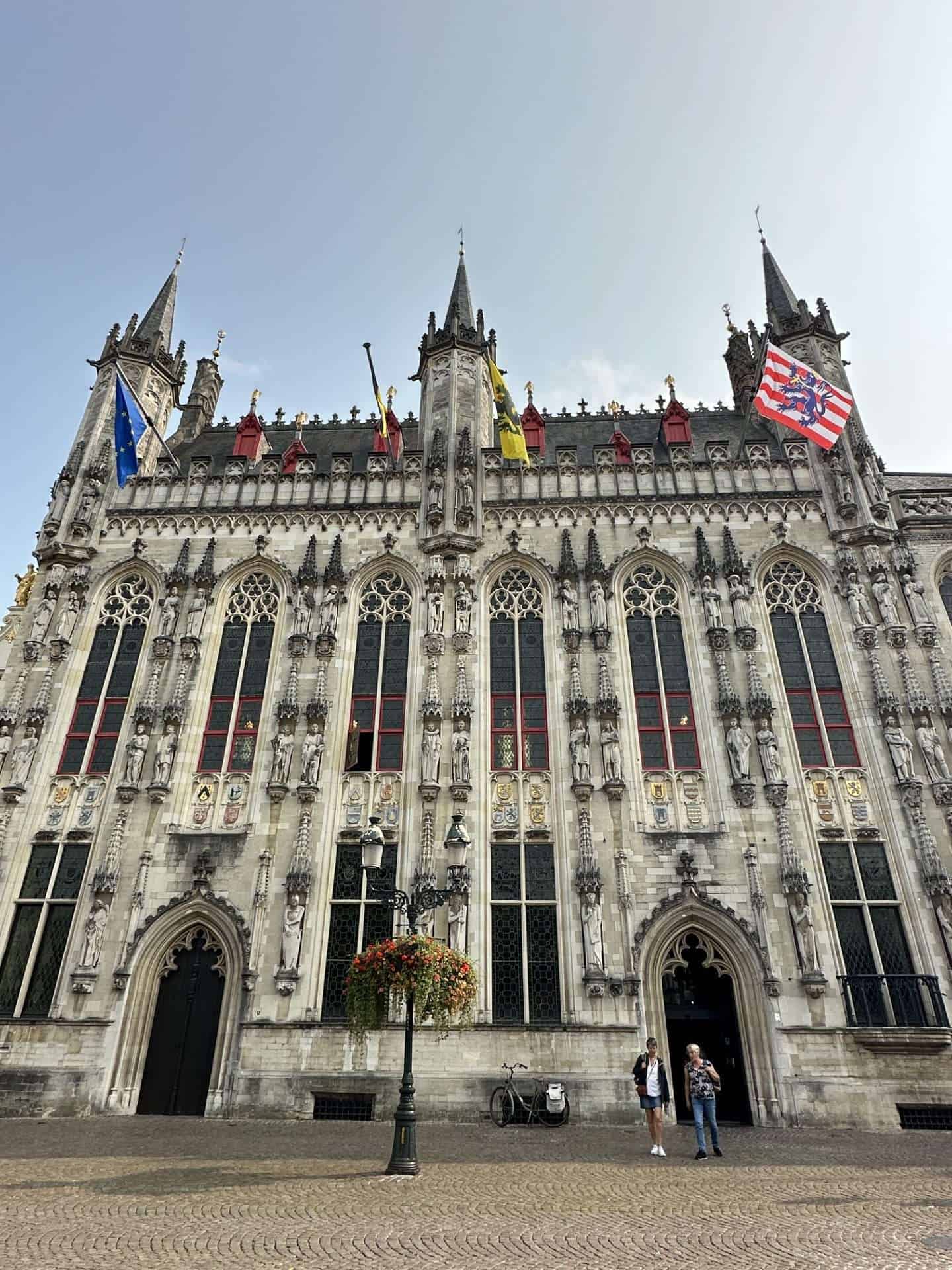
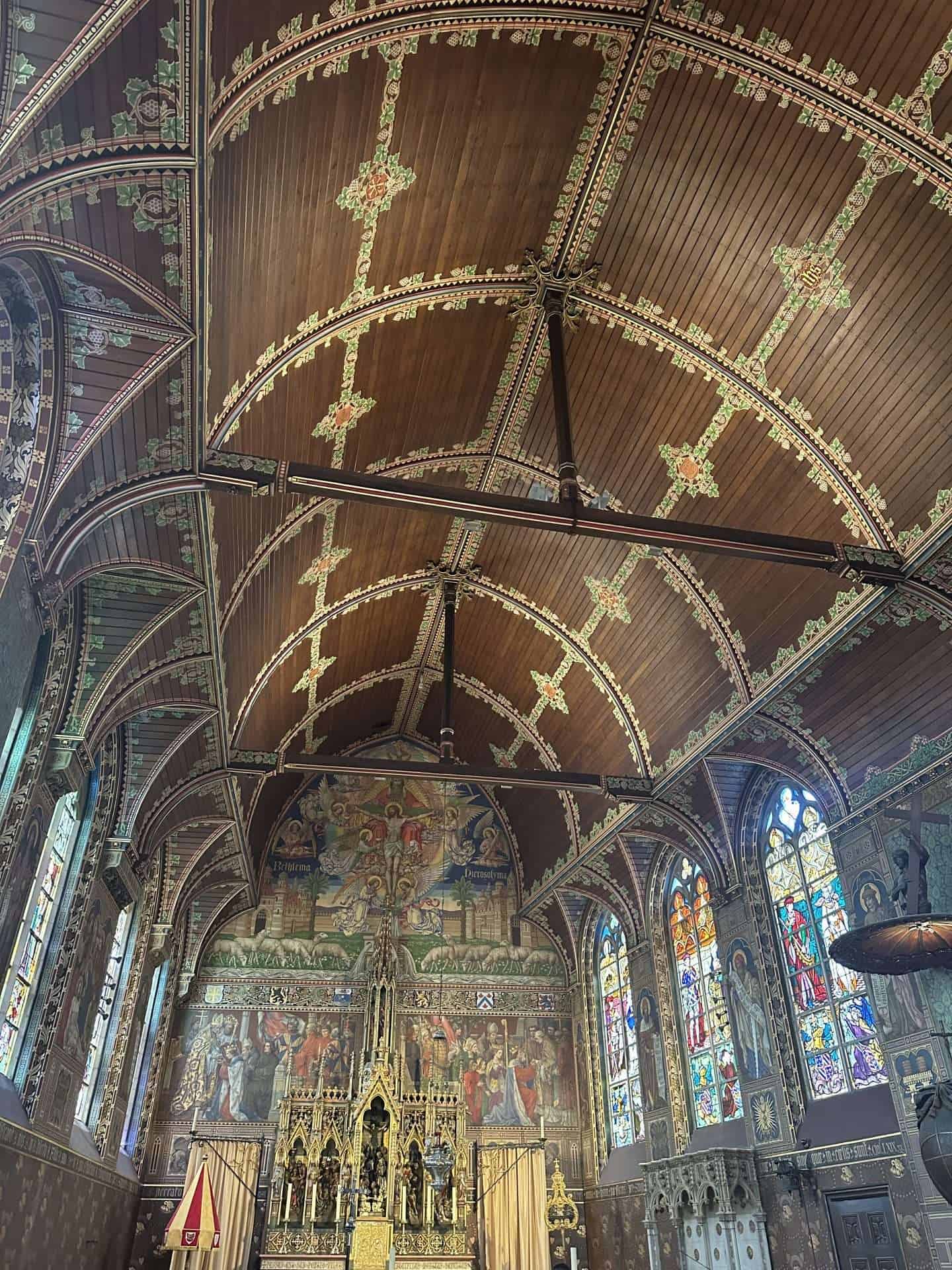
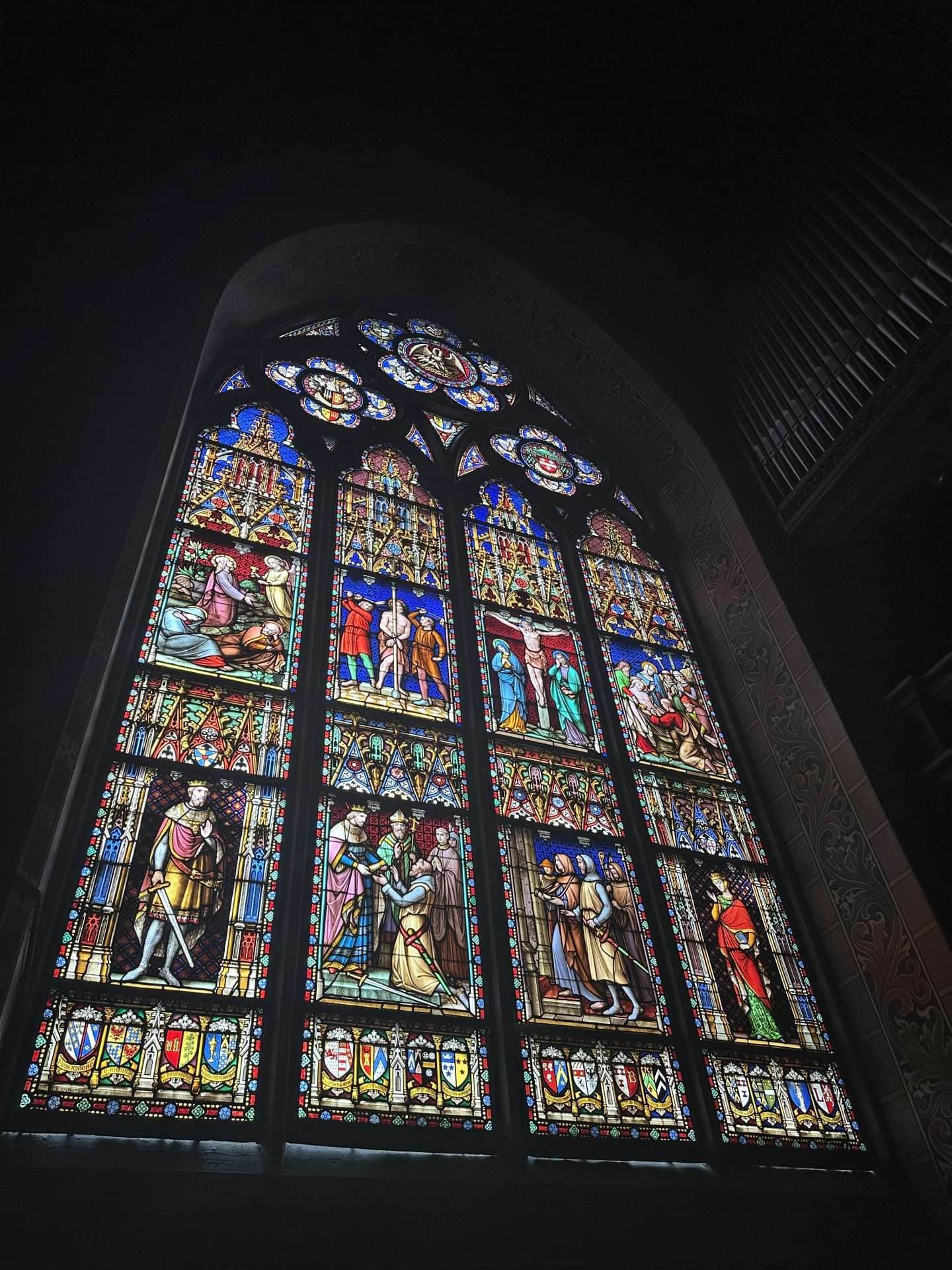
The Gruuthusemuseum
This museum is really interesting as it blends history, anthropology and art together. This is a 15th century palace that has been converted to a museum. Here you see a sense of the beautiful architecture of that era as well as how (prominent) people lived at the time. You’ll find a blend of art, furniture, tapestries, housewares and clothing. There is an outdoor balcony overlooking the Bonifacius Bridge and has views of the Church of Our Lady. You’ll even find a private interior balcony that looks out over the interior of the Church of Our Lady.
The ticket price is €15, but if you have either of the museum passes the cost is included. If you don’t have the pass and plan to visit the Church of Our Lady, you can get a combined ticket to include the museum portion of the church for an additional €2, vs the separate entry fee of €8.
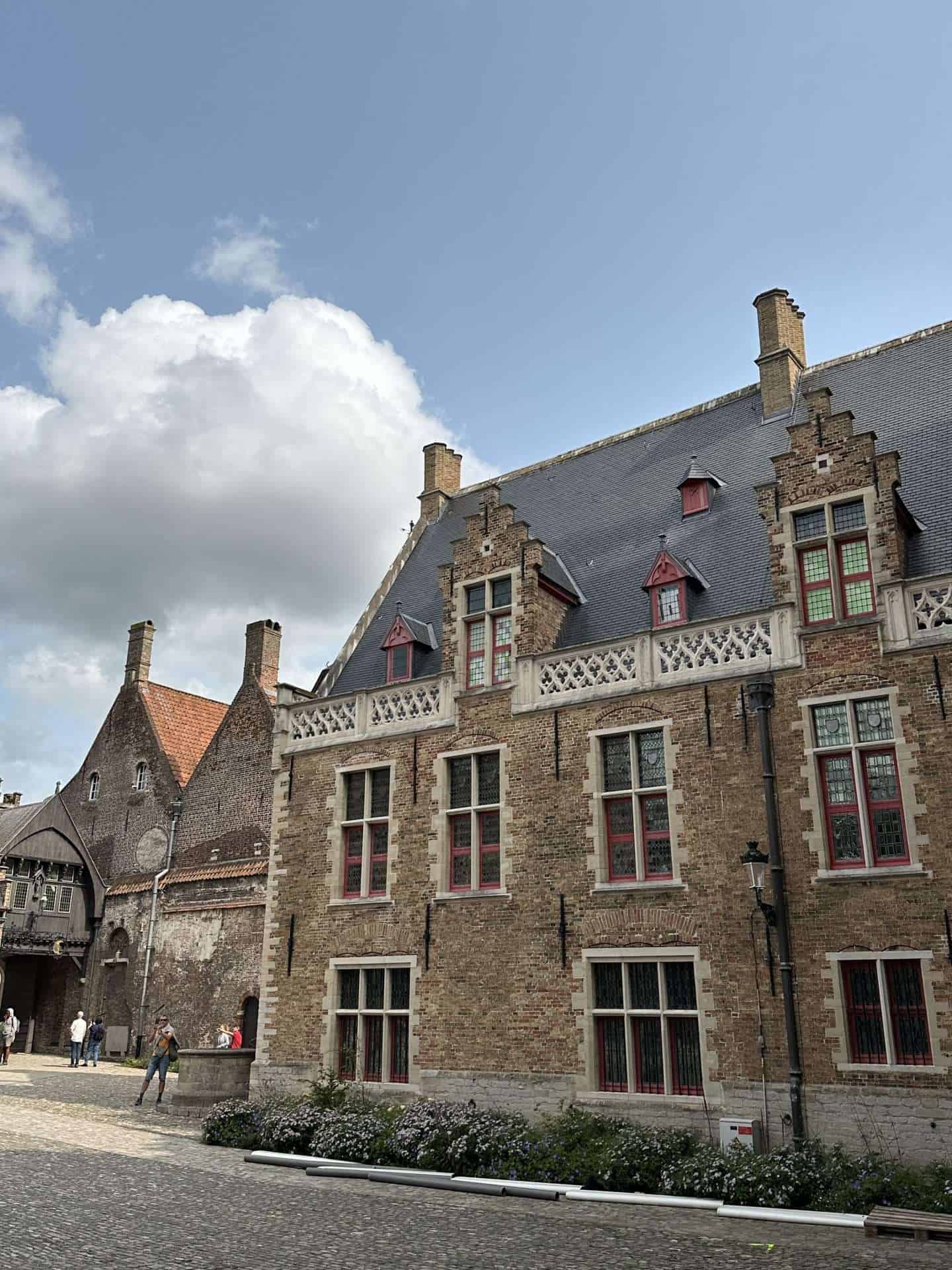
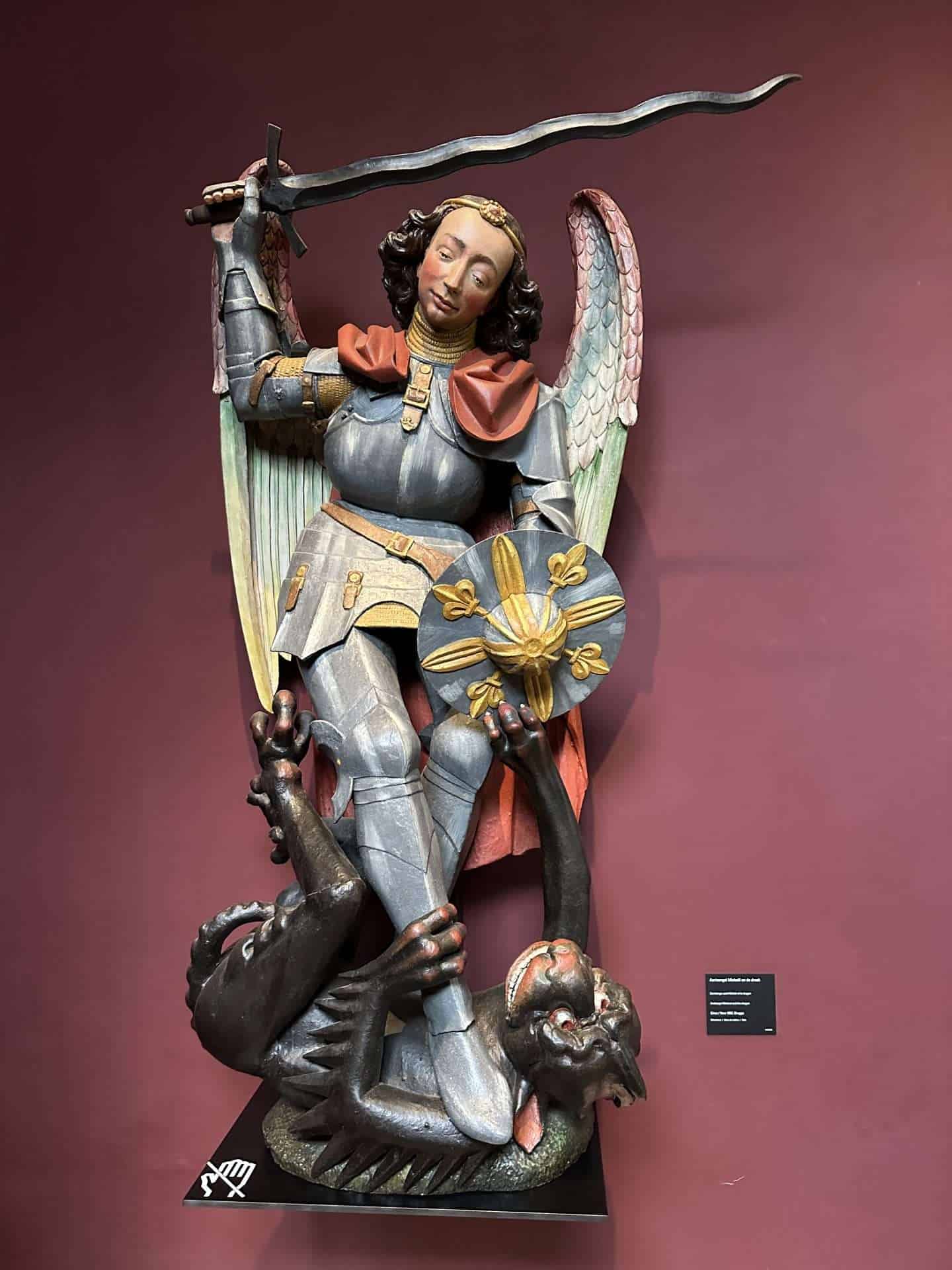


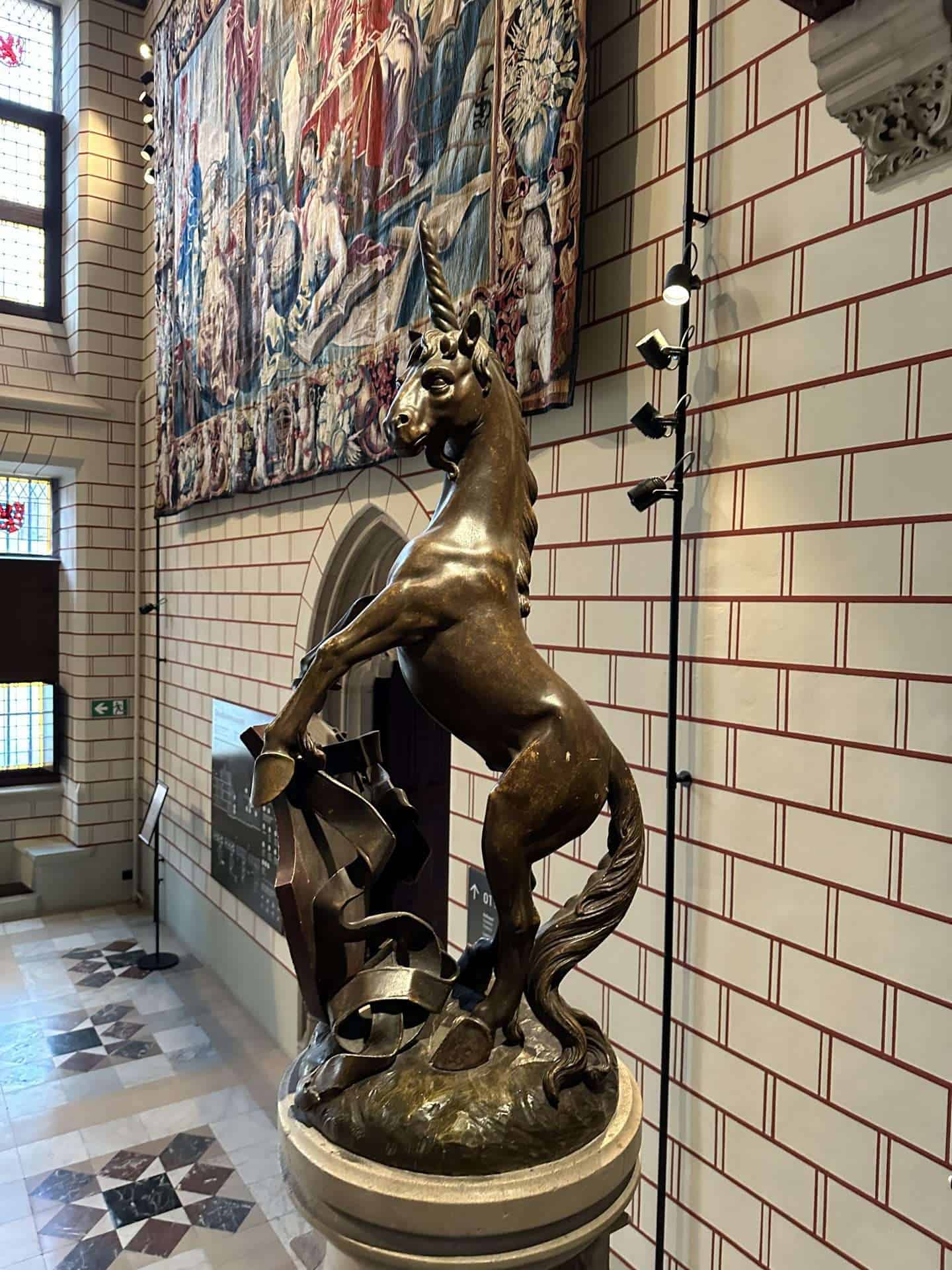
Groeningemuseum
The Groeningemuseum is another fantastic museum option for your one day in Bruges itinerary.
The museum is near the Gruuthusemuseum, on the northeast side of Arentshof park. The art museum features 600 years worth of Flemish art from Jan van Eyck to contemporary artists.
The museum is open Thursday to Tuesday and admission is €15, unless you have a museum pass.
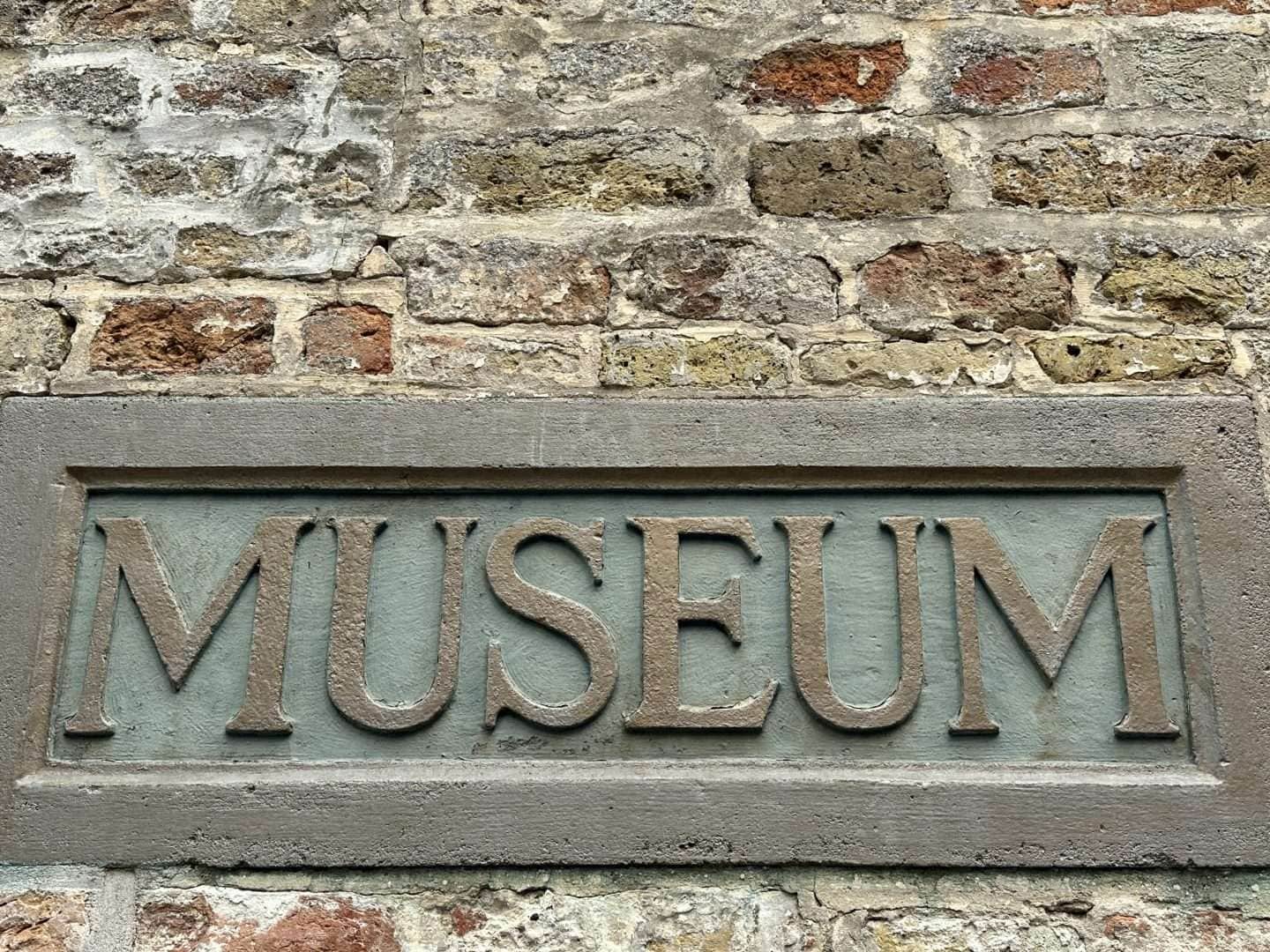
Church of Our Lady
Directly next to the Gruuthusemuseum you’ll find the most prominent church in Bruges, as well as the largest structure in the city. At 379 feet this is the tallest building in Bruges and the third tallest brick tower in the world. This is a beautiful example of gothic architecture with the exterior flying buttresses prominent in catholic churches throughout Europe. The site has been home to a church since 875. The current structure was built in the 1200s.
Much of the church is free for entry, but to access the tombs and Michaelangelo sculpture, you’ll need to purchase a ticket. The museum ticket includes viewing of the burial tombs of Charles the Bold and Mary of Burgundy. You can also see older, painted 13th century tombs underneath the floor through glass cutouts.
The most famous part of the church is the statue of the Madonna and Child by Michelangelo. Purchased in the 1500s by a Bruges merchant, this is the only Michelangelo sculpture outside of Italy. The sculpture was removed by the the French in the 1700s and later recovered from Nazis and returned after World War II.
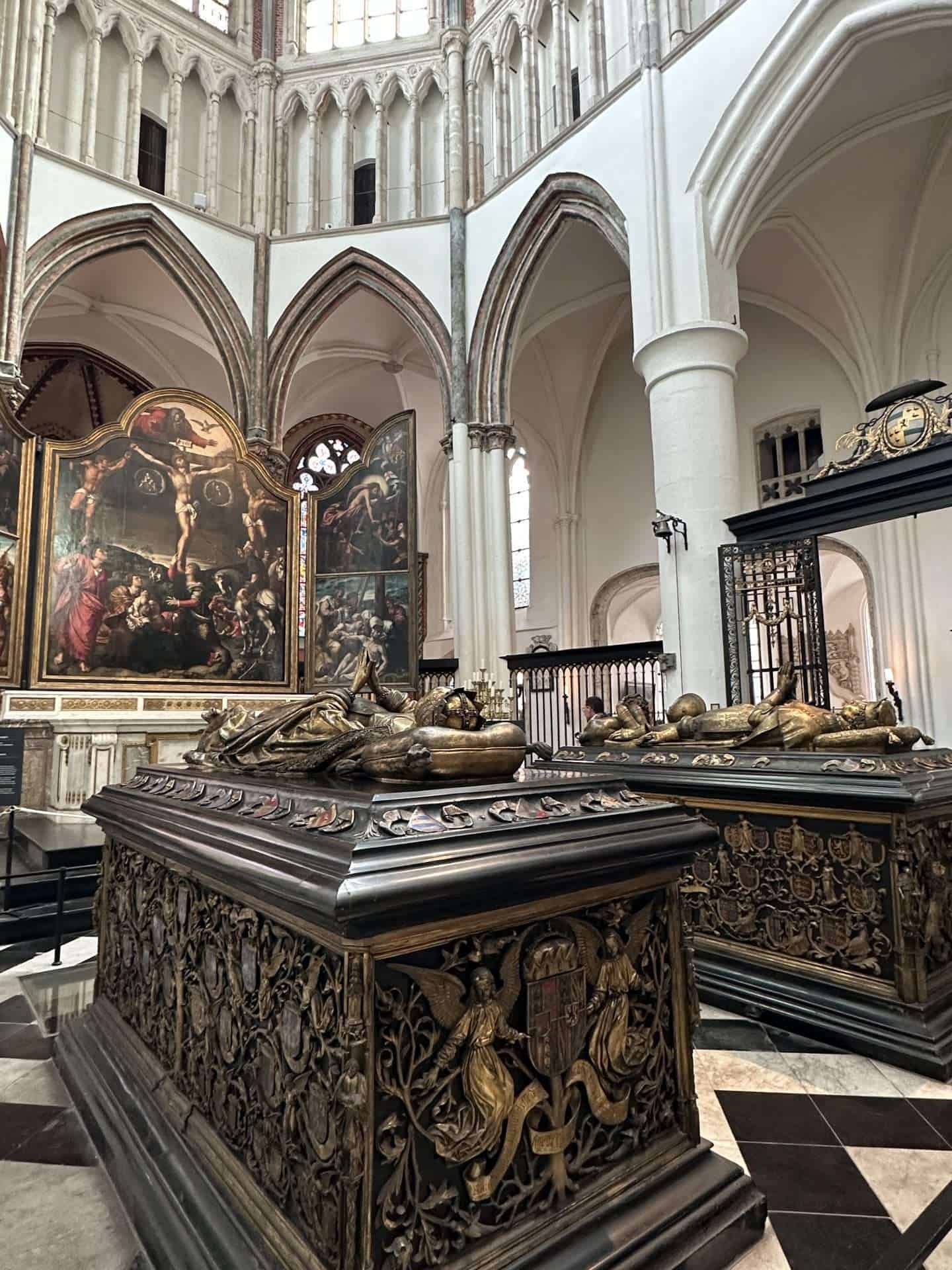
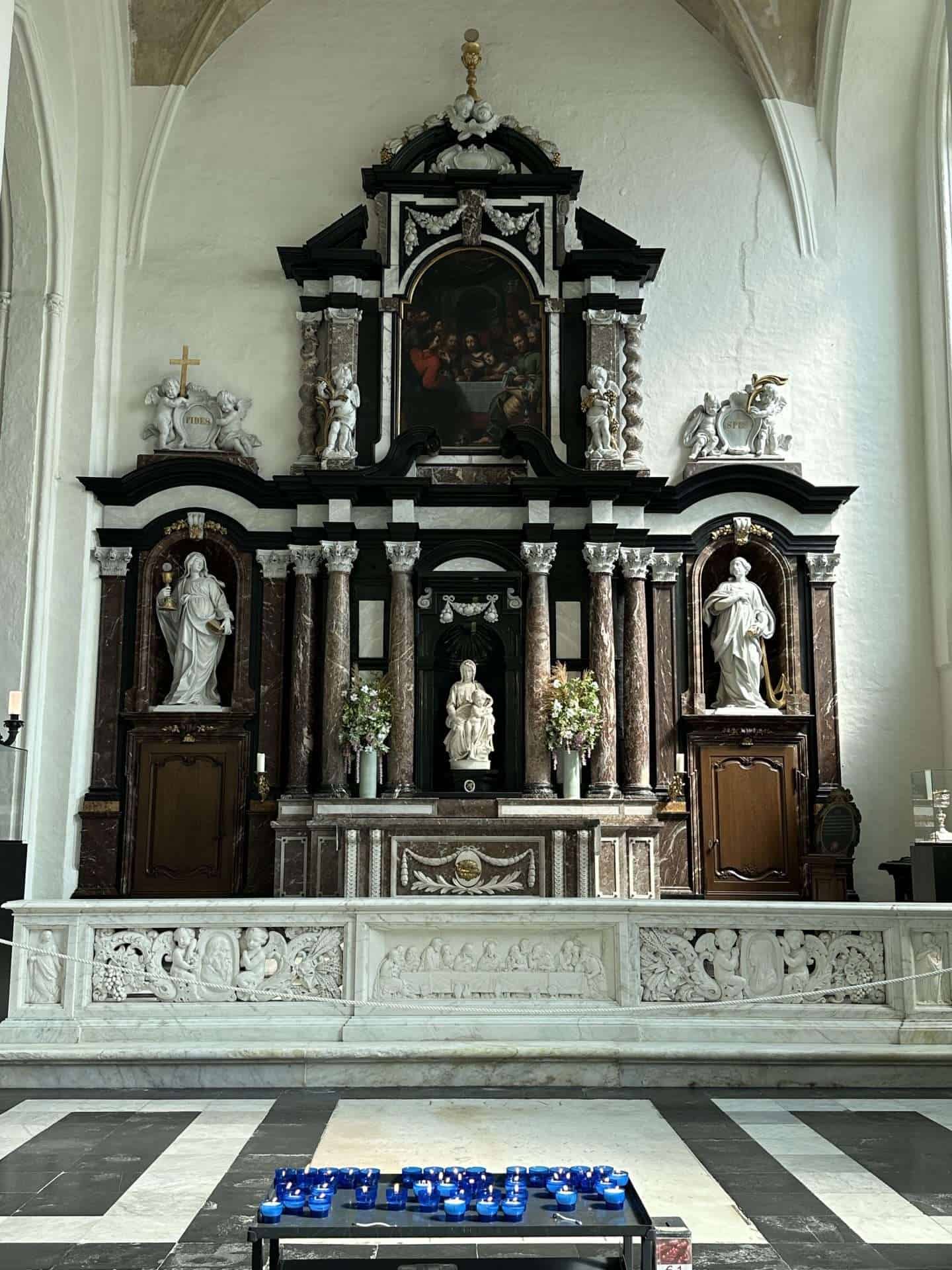
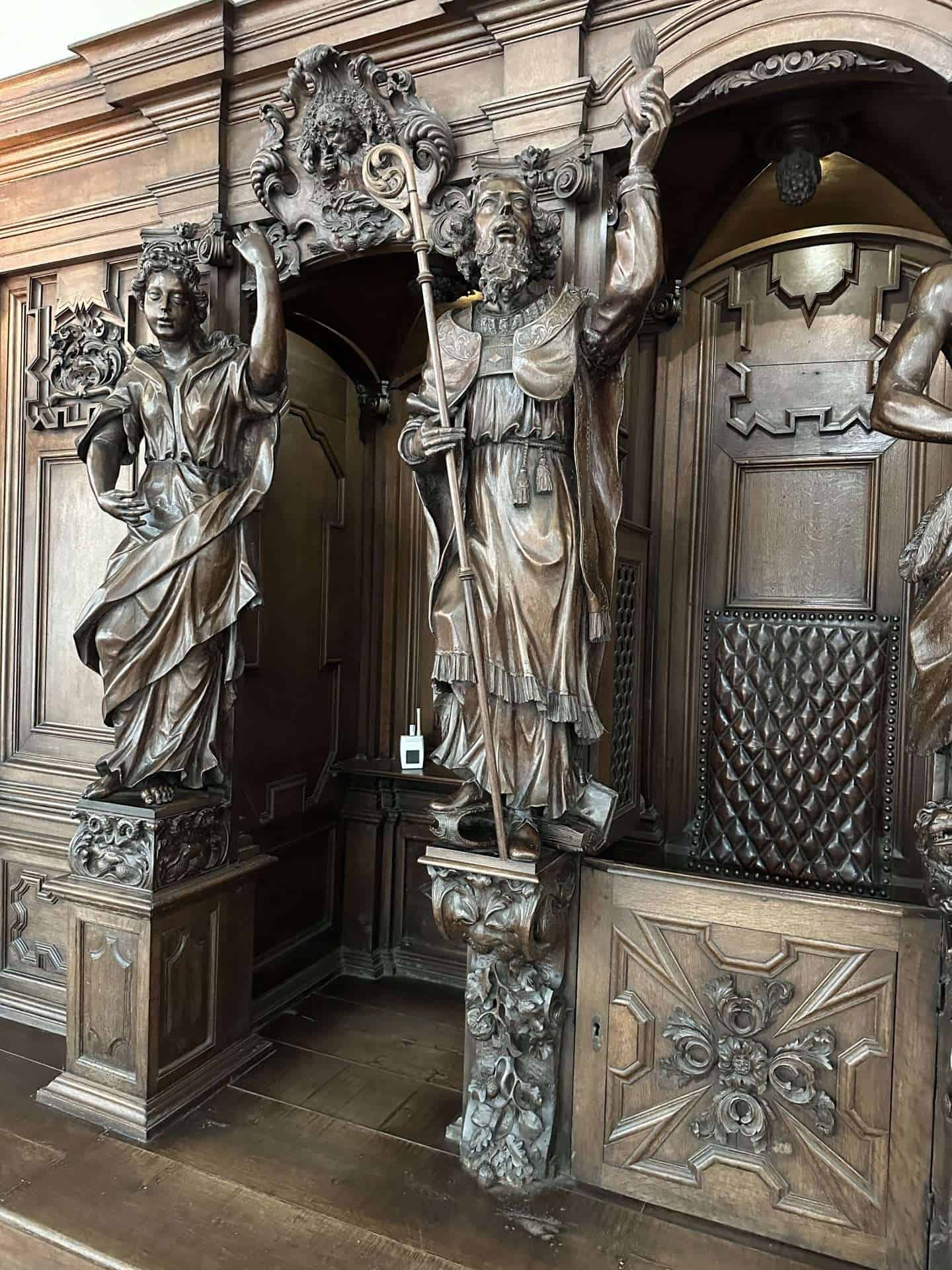
Boniface Bridge and Arentshof
After visiting the Gruuthusemuseum and Church of Our Lady, follow the path along the south side of the church to cross the Boniface Bridge into the Arentshof park. The Boniface Bridge is a small stone footbridge crossing the canal leading in/out of Arentshof park. Here you’ll find fantastic views of the backside of the church (including the buttresses) and the Gruuthusemuseum as well as canal views. The bridge is a popular spot for tourist photos but the park is a great place to sit and take a break from walking. Before you head here, grab some frites or lunch from Frit Bar and eat in the park.
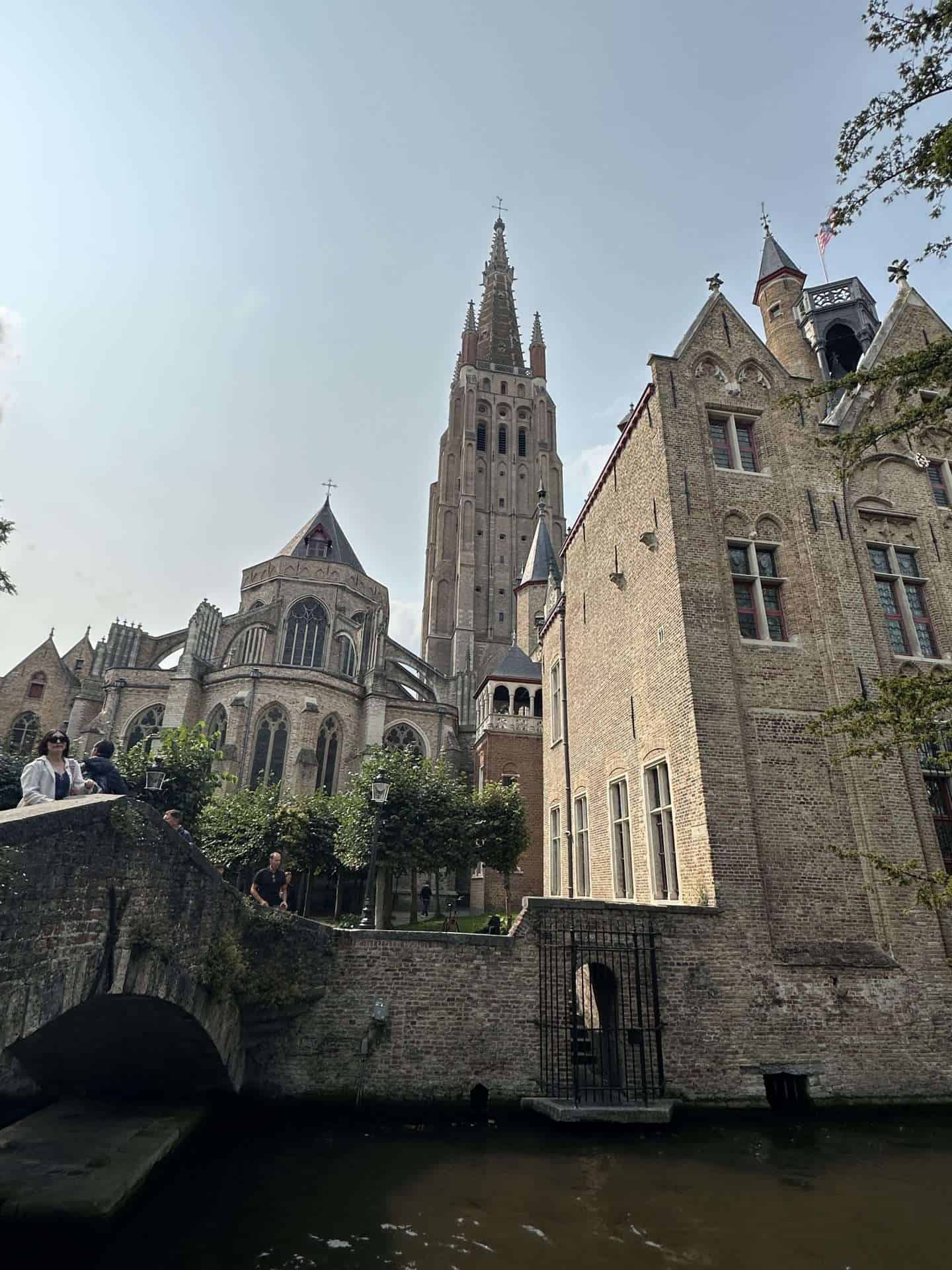
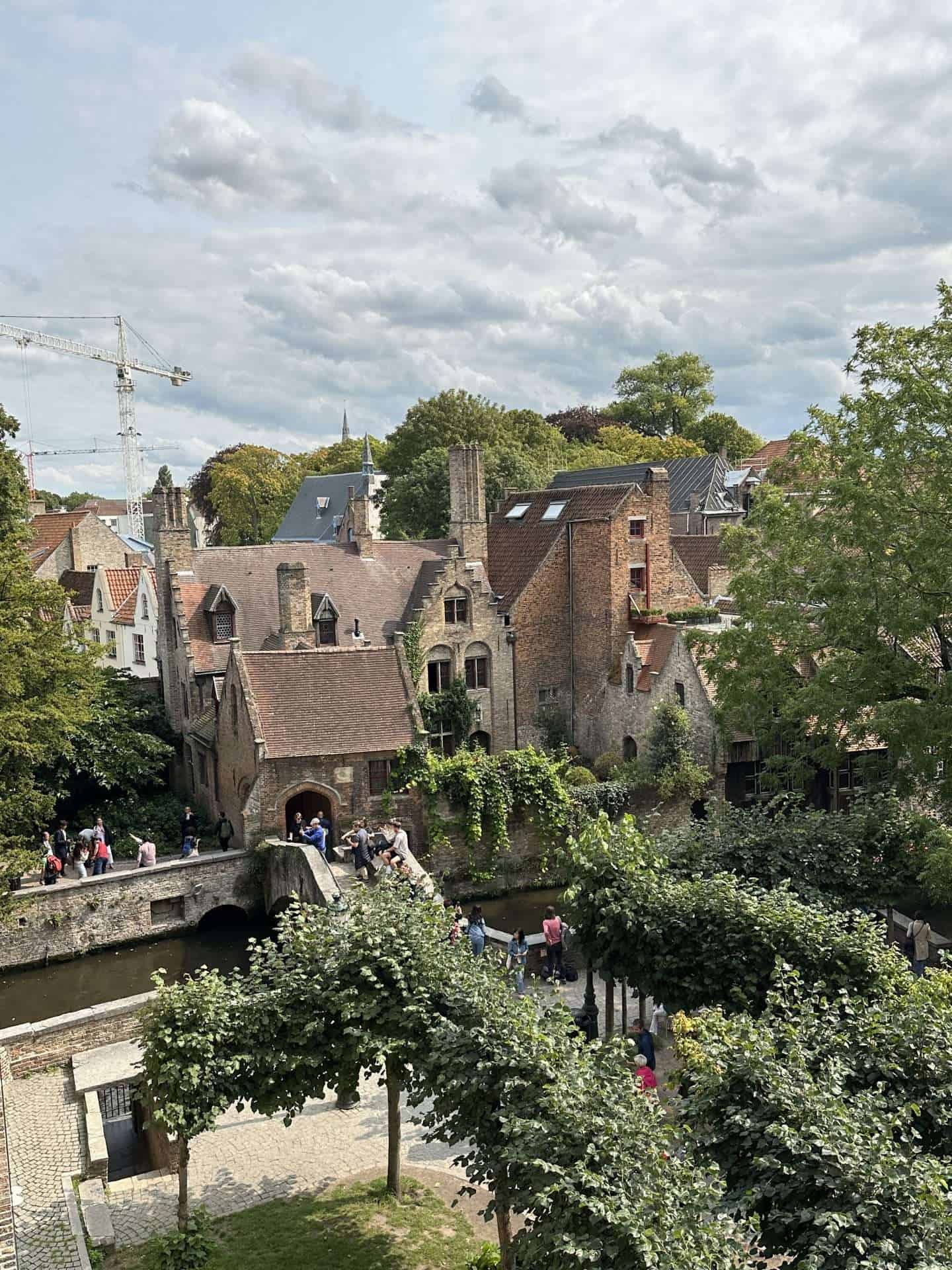
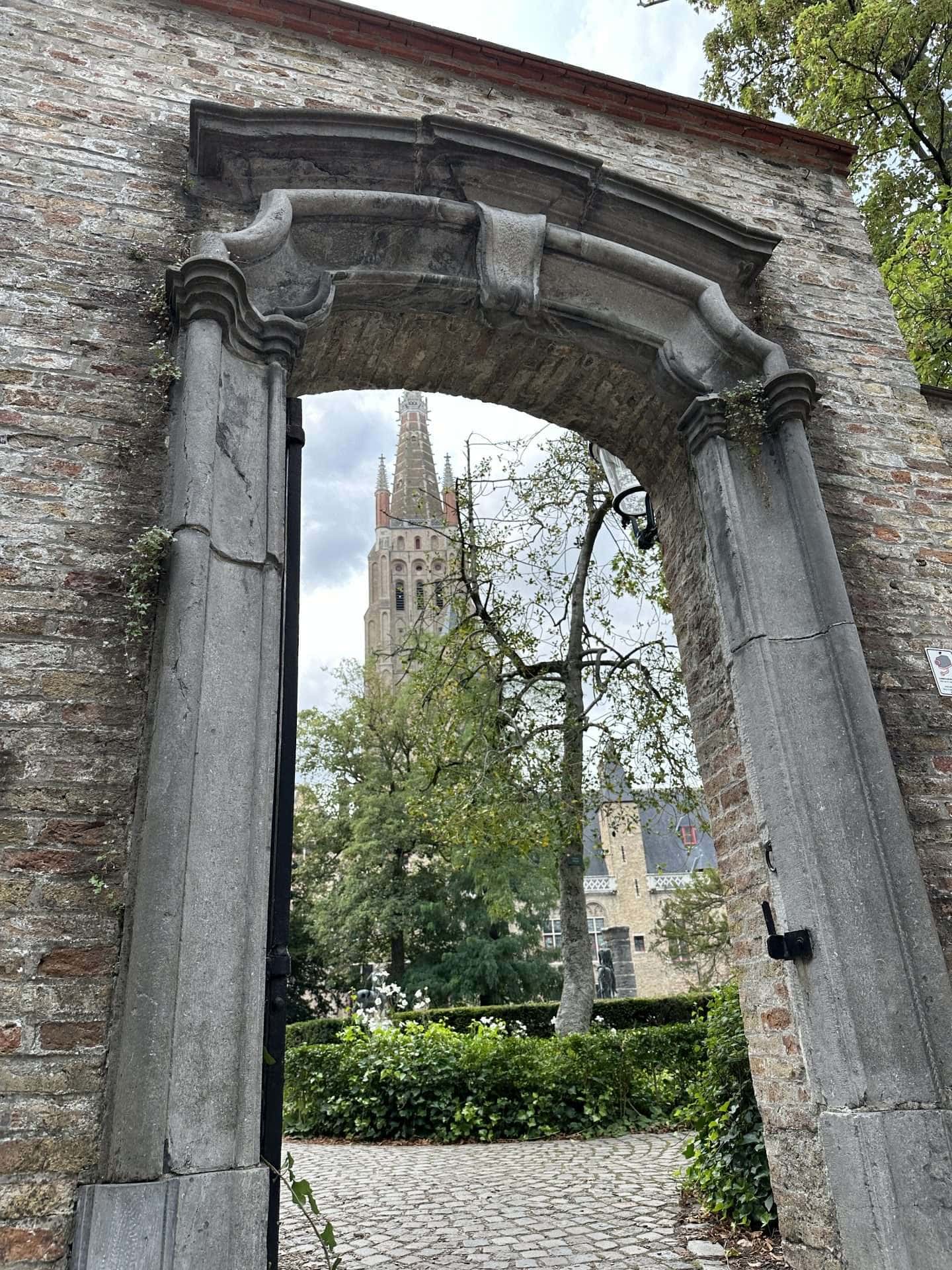
Take a Canal Tour
A canal tour is one of the best things to do in Bruges. You can see a large portion of the city, while also learning the history. Canal cruises are in open air boats, so they only run during peak and shoulder season, typically late spring through mid-fall. The cruise is only 30 minutes long, but covers the history of the city, identifies important landmarks, and has a quick stop in Minnewater lake where you will pass by the large white swans swimming in the water.
There are a number of cruise companies available that all follow the same route. You can find them near the Rozenhoedkaai (Rosary Quay) and Nepomucenus Bridge. Boats hold 30-40 people and leave every 15-30 minutes depending on the time of year. Reservations are not necessary, just walk up to the ticket window then you’ll be guided to a seating area to wait for the next boat. The tour is given in multiple languages, on our cruise the captain spoke Flemish/Dutch, English and French. The prices are generally €14-15 for an adult.
If you prefer a deeper dive into they city history, book a small group walking tour with boat cruise. This tour will walk you through the main sites listed above, as well as taking a canal tour. The tours last 2.5 hours.
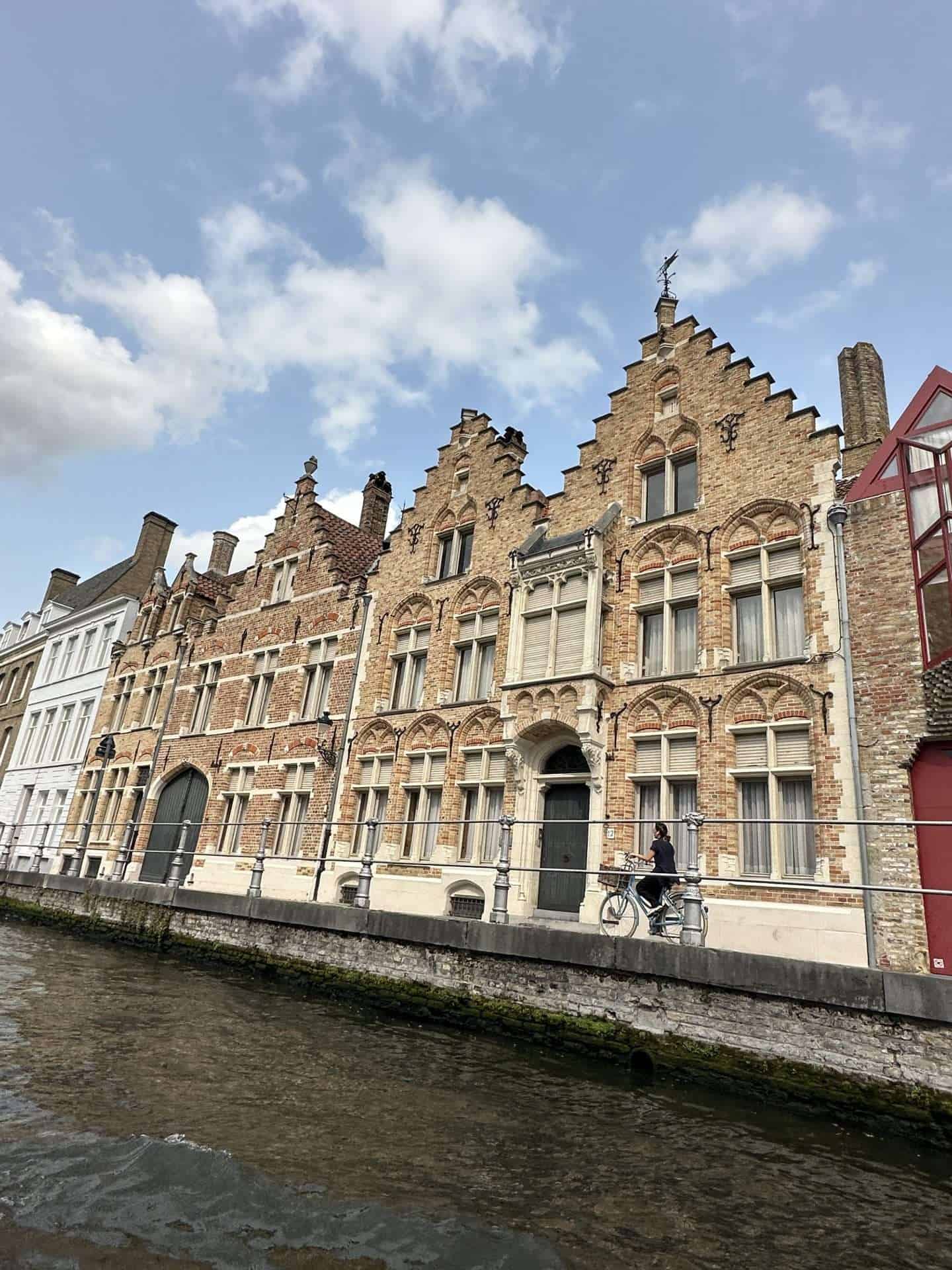
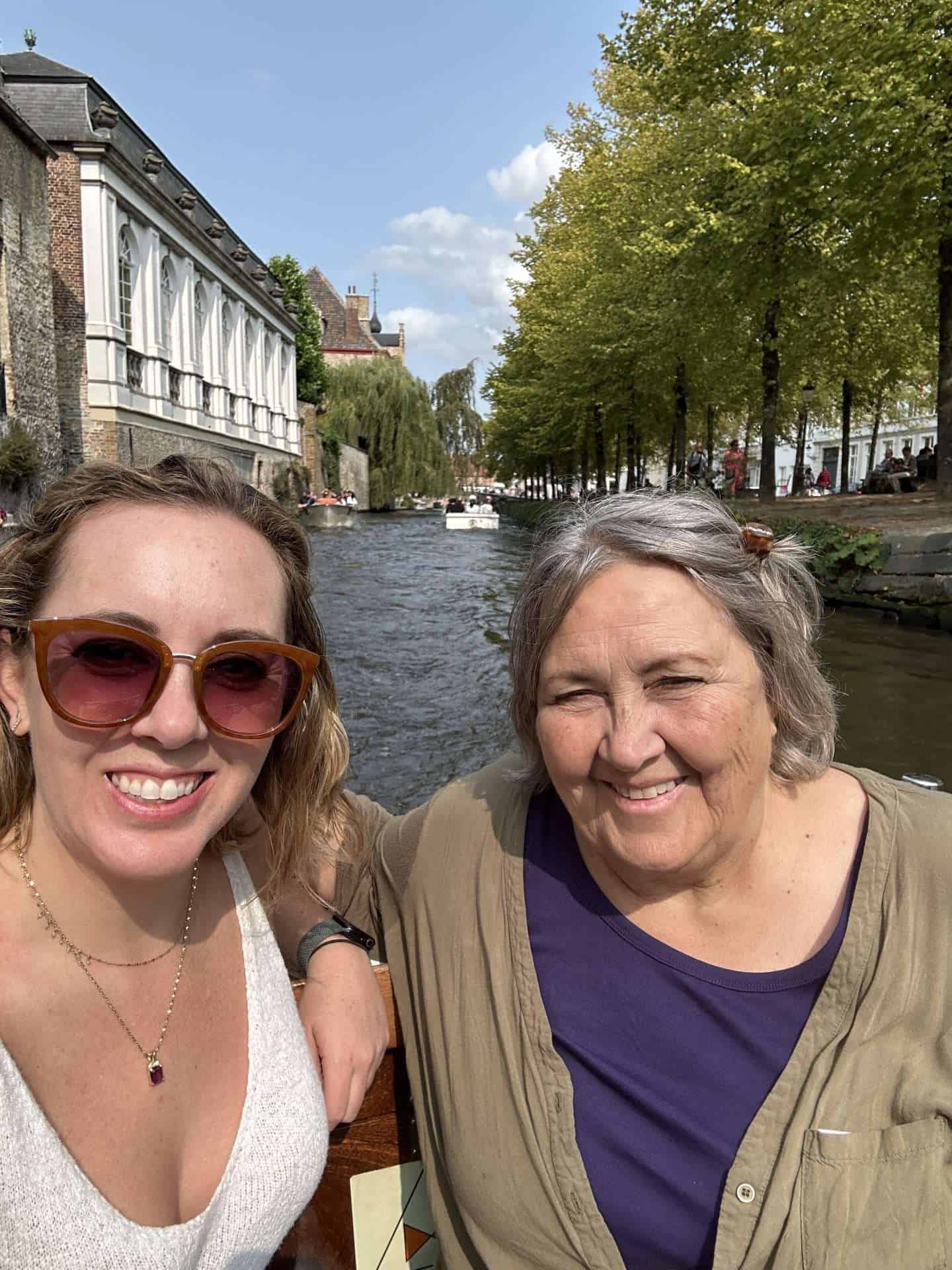
Food and Beverage tours in Bruges
If museums and churches are not your jam, there are other more unique things to do in Bruges. Belgium is known for rich foods and drinks, and Bruges is no exception. Get to know some of the classic Belgian fares with the following tours and workshops.
Chocolate
Join a 1.5 hour guided tour of the Choco-Story chocolate museum. During the tour you’ll see a chocolate making demonstration and enjoy samples. Or take a 2.5 hour chocolate workshop where you’ll leave with a full box of chocolates to take home with you.
Waffles
Belgian waffles are a staple that you have to enjoy at least once on a trip to Belgium. In this fun workshop you will mix up your own waffle batter to make and enjoy waffles with the toppings of your choice. Enjoy a tasting of 3 Belgian beers while you work.
Beer
The De Halve Maan Brewery is one of the most popular breweries in all of Belgium. This brewery dates back to the mid 1800s. The family owned business is a staple of Bruges where its large facility sits along the canal near the Minnewater and its famous swans.
The brewery offers a 45 minute brewery tour with 1 beer for €16 or a 90 minute tour with 3 beers for €26.

How to save money during one day in Bruges
There are two options for passes to purchase and save money while in Bruges. You can purchase either the Musea Brugge Card or the Museum Pass Musées card. Which pass you purchase will depend on how long you plan to stay in Belgium.
Musea Brugge Card
This card is good only for museums and historic sites in Bruges. With the card you are able to visit every site once within a 72 hour period. After the 72 hour period, the card expires. The card costs €33 for an adult, but with a visit to the Belfry and one of the museums it will pay for itself.
Museum Pass Musées card
For longer trips through Belgium, I recommend getting the Museum Pass Musées card. Once activated, this card is valid for an entire calendar year. Not only does it work for the same sites in Bruges as the Musea Brugges card, but it also gives you access to museums throughout Belgium. This card is €59 for an adult. To see how it pays for itself read How to Visit the Best Museums in Belgium
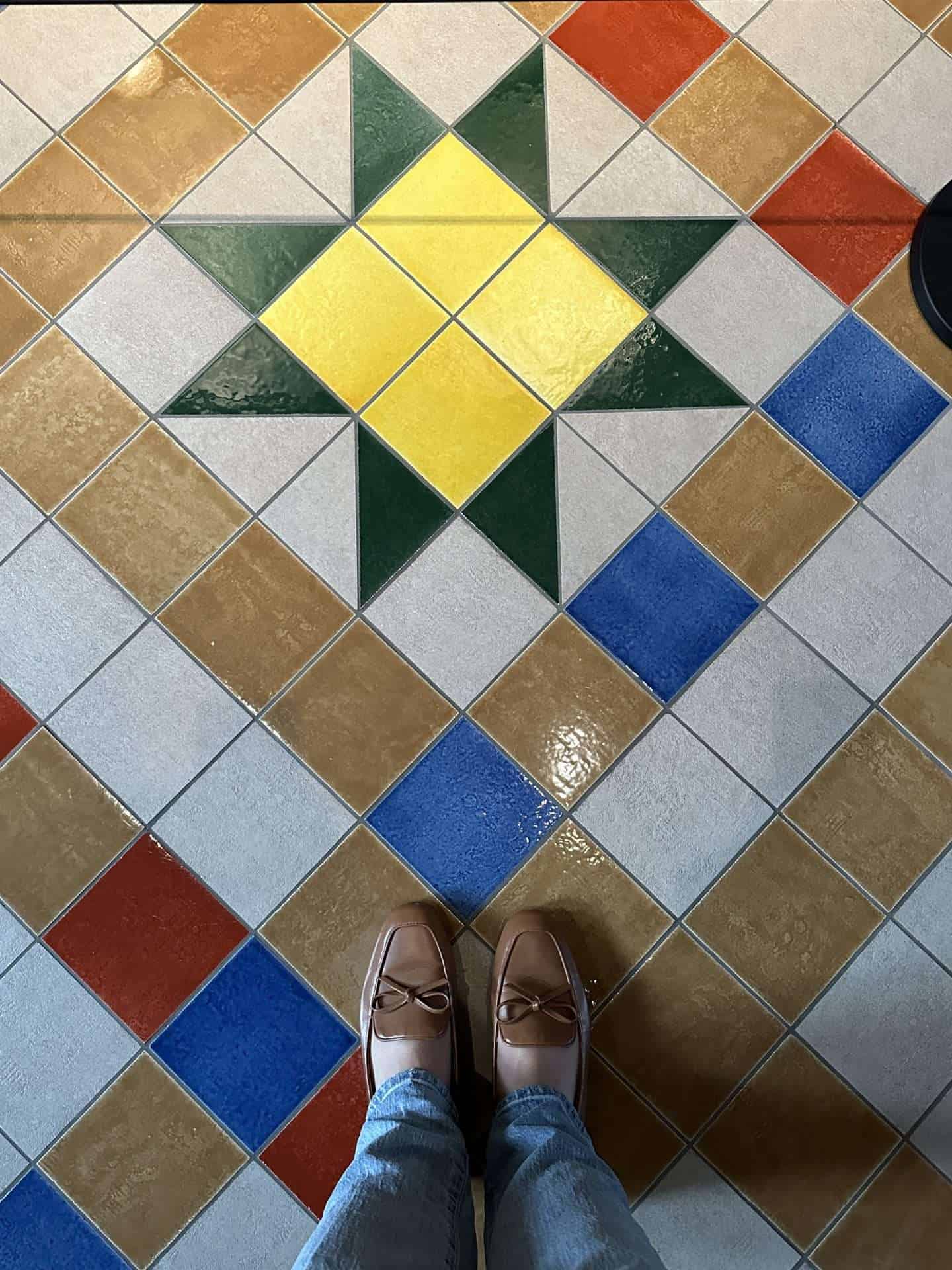
What to eat during your one day in Bruges
Be sure to stop by Fritbar when in Bruges. This fry shop has some of the best Frites in Belgium. Aside from the hot & fresh frites, the location is right next to a picturesque canal bridge, and a short walk to the Bonifaciusbrug Bridge and Arentshof park.
If you are looking for something lighter than much of the heavy food and beer in Belgium, stop by Cuvee Wine Bar. This wine bar is located a short walk from the Grote Markt and De Burg. If the weather is nice, grab a seat at one of the outdoor tables along the street or in the indoor courtyard. Otherwise, take a seat inside the cozy wine bar. They serve cold small plates such as a selection of incredible cheeses and homemade cheese crackers. Warm plates aren’t available until early evening when the kitchen opens, but worth the wait if you are there later. The wine list is extensive, but definitely check out an orange wine while there.
While in Belgium you’ll see chocolate everywhere. The street between Markt and De Burg is lined with chocolate and sweet shops. If you love nougat or marzipan, stop by Marzipan & Nougatshop by Brown Sugar. While we didn’t pick up any chocolate (in Bruges) the owner of the wine bar recommended Chocolatier Dumon which has multiple shops in Bruges. One thing to note, many of the sweets shops are only open until 6pm, so you need to stop in before you transition from your one day in Bruges to your night in Bruges.
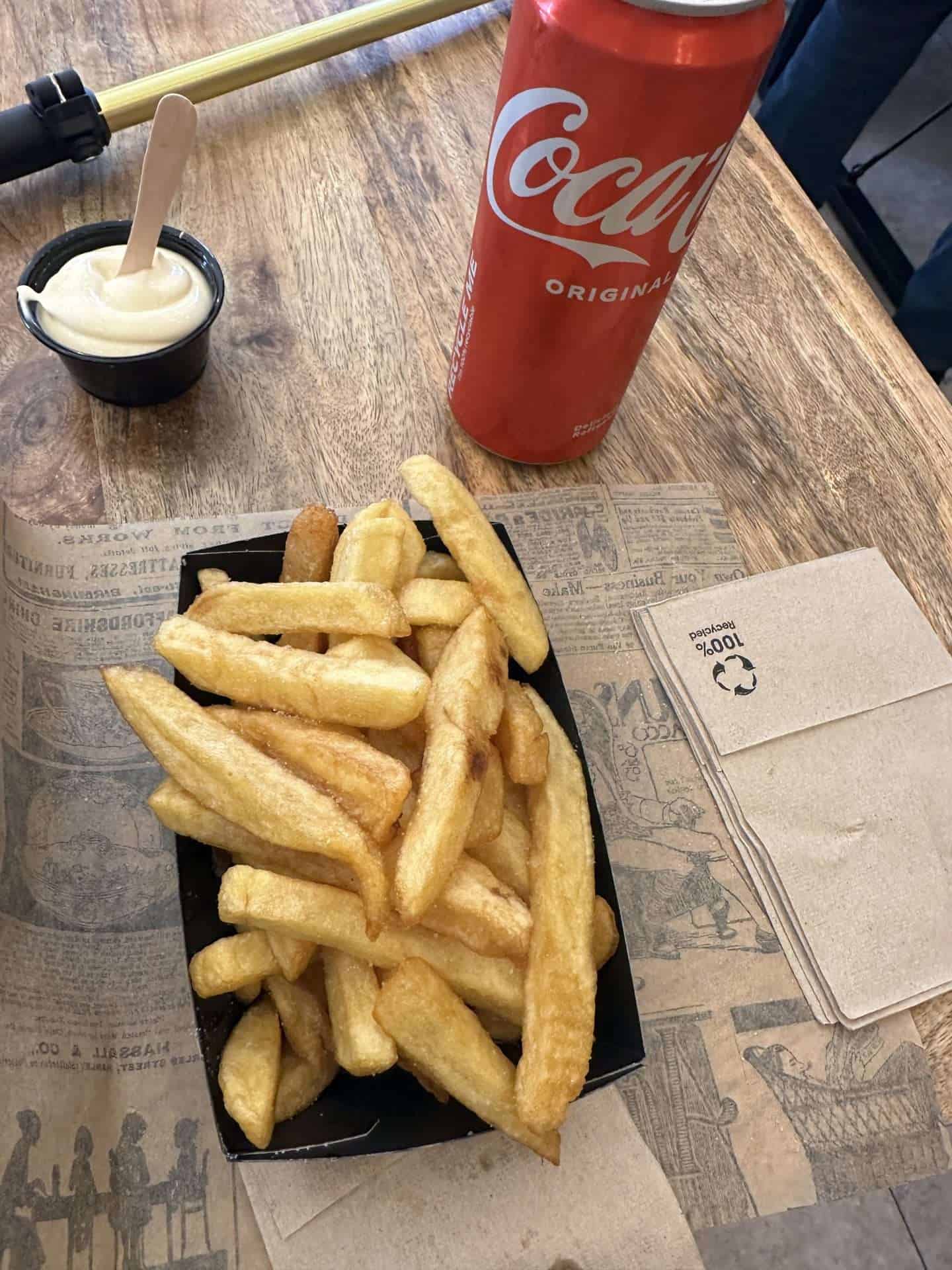
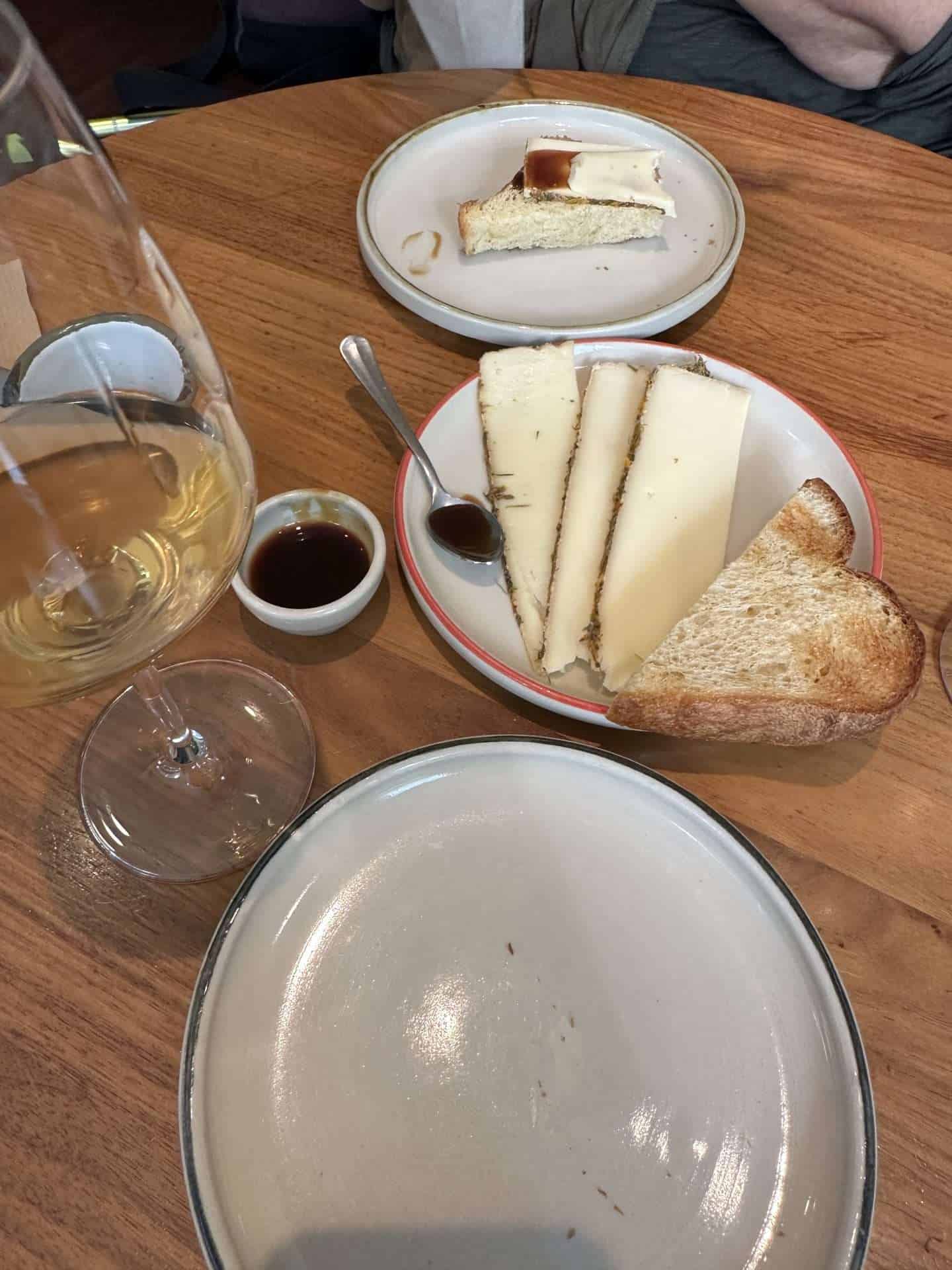
One day in Bruges FAQs
How many days should you spend in Bruges?
If you have limited time, one day in Bruges will be enough to see the city highlights. However, if you’ve got more time in your travel schedule, take 2-3 days to take in more of the city and sites.
Is one day enough in Bruges?
One day is enough to see the most popular attractions in Bruges. Two days in Bruges is recommended to have more time to explore.
What to do in Bruges for a day?
For one day in Bruges, the top things to do are visit the belfort or belltower for the best view of the city. In the summer (or warmer seasons) take a canal tour to learn the history of the city. Stop by a chocolate shop for famous Belgian chocolate. There are a number of museums and churches throughout the city that are worth visiting.
Can you walk around Bruges in a day?
Yes, Bruges is a generally small and very walkable city. It is easy to walk around the main city center and popular sites in one day.
Is Bruges French or Flemish speaking?
Locals of Bruges speak Flemish as Bruges is located in the Flanders region of Belgium, however you’ll find English is widely spoken as well.
Is Bruges English friendly?
Yes, you will find most people in Bruges speak English, especially in the city center.
